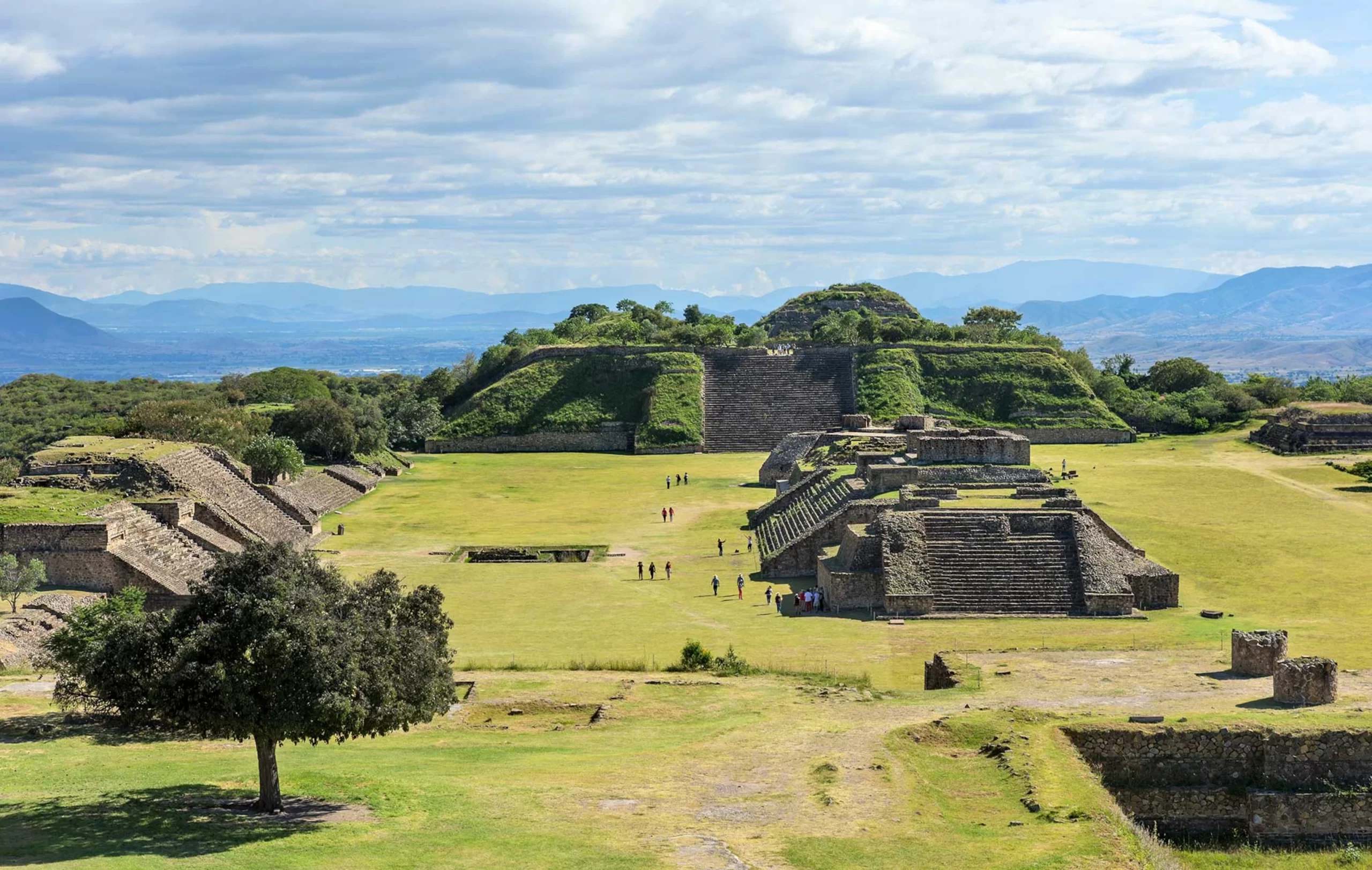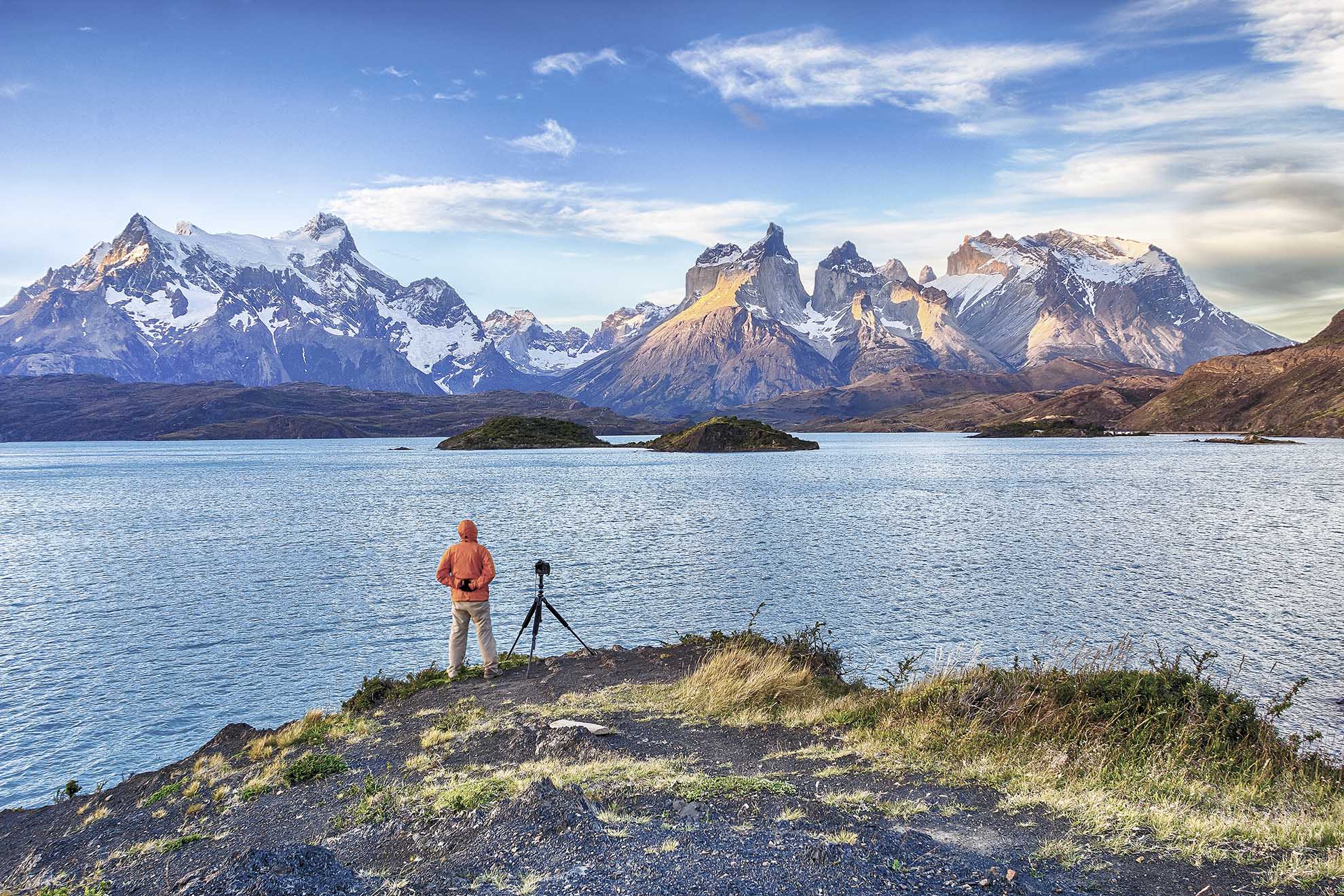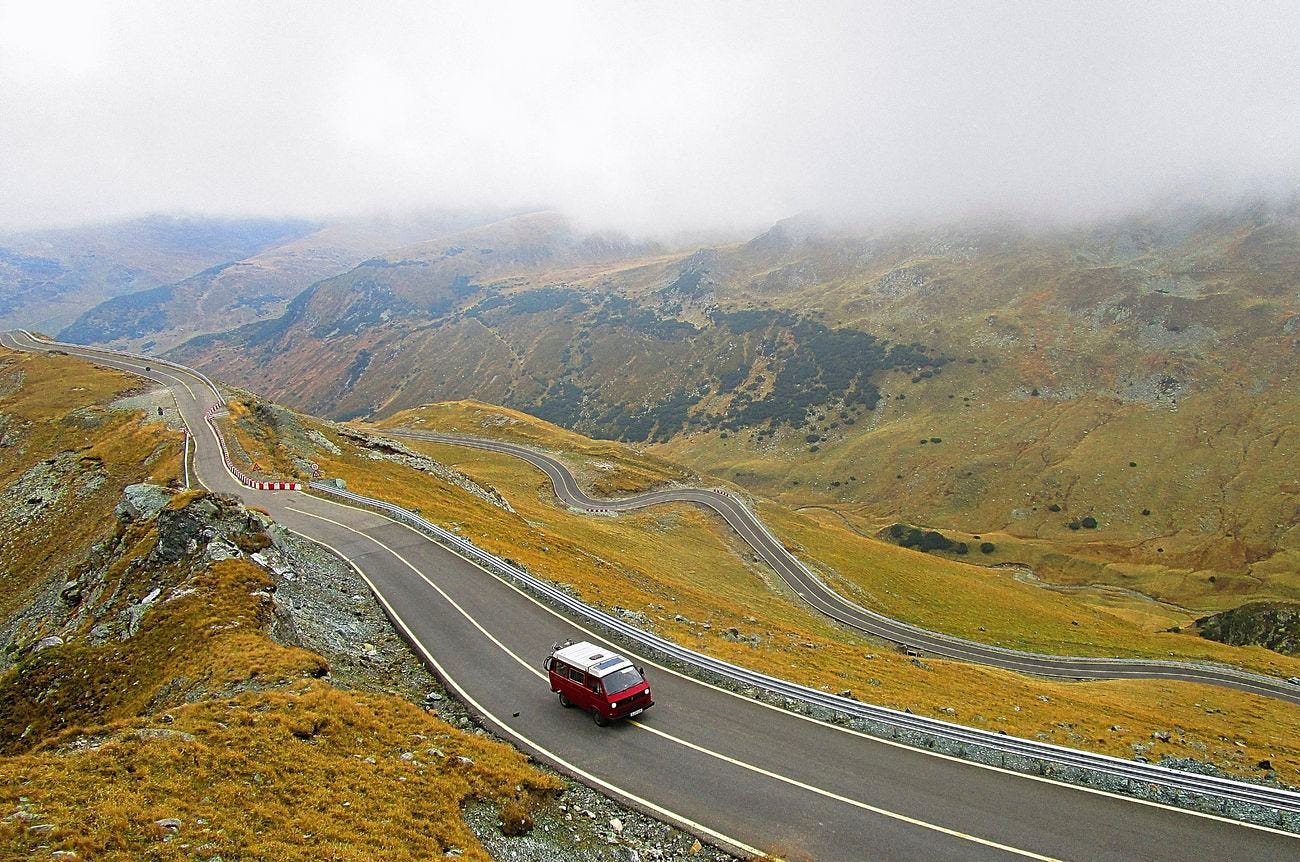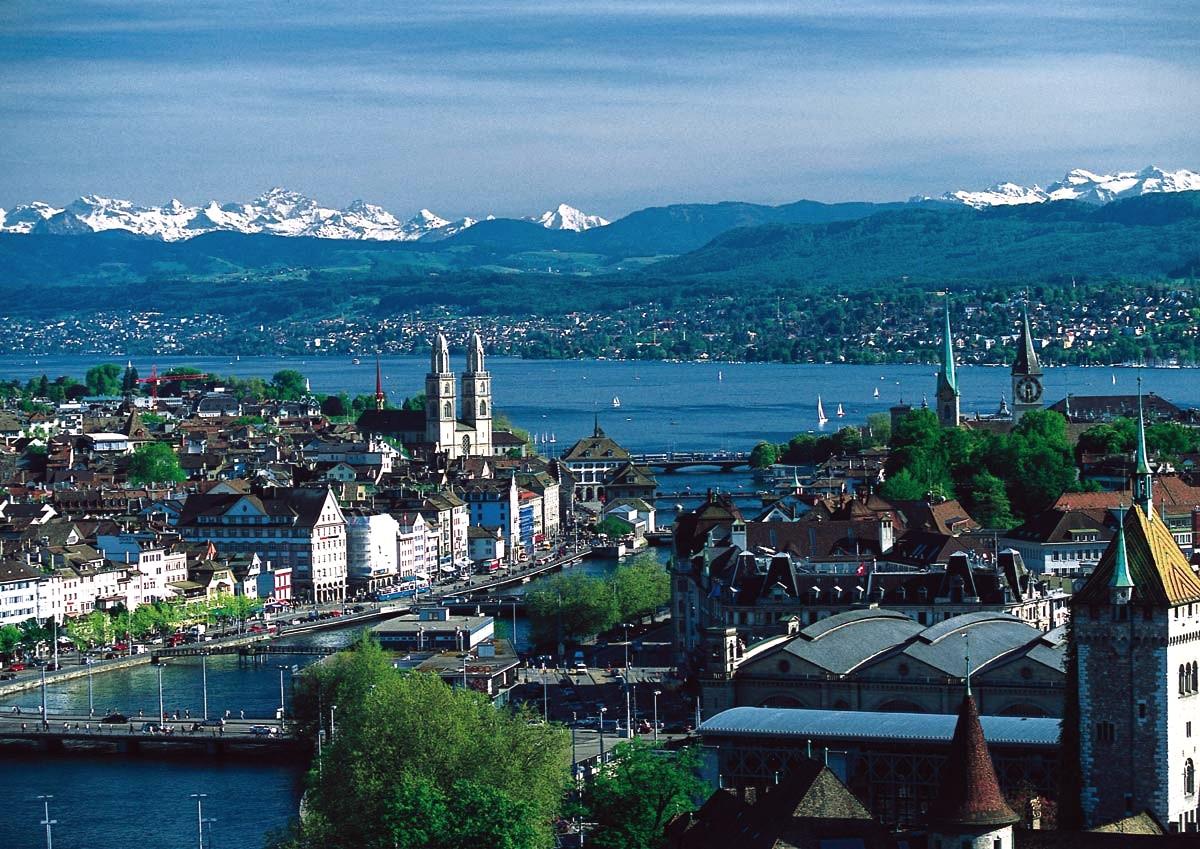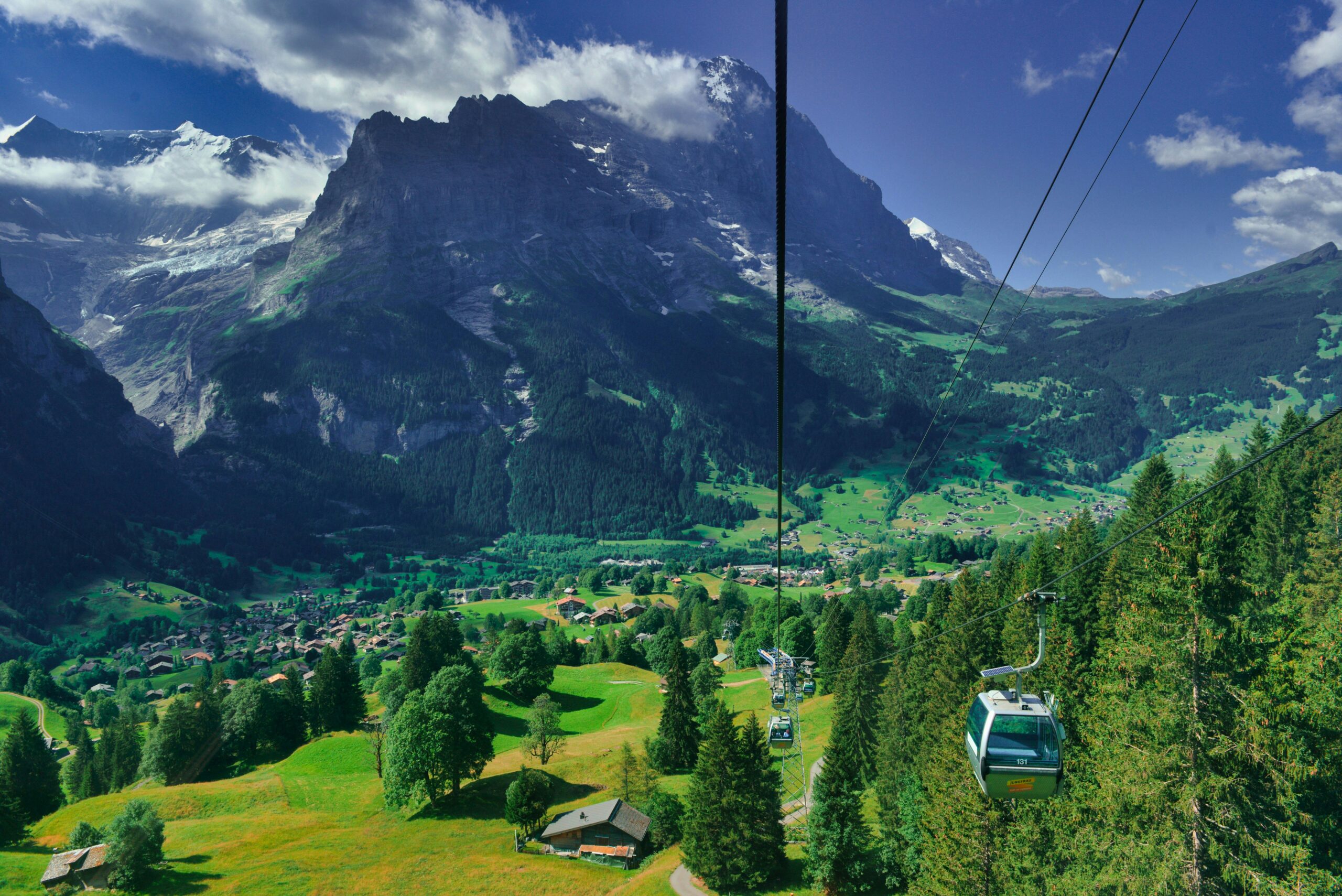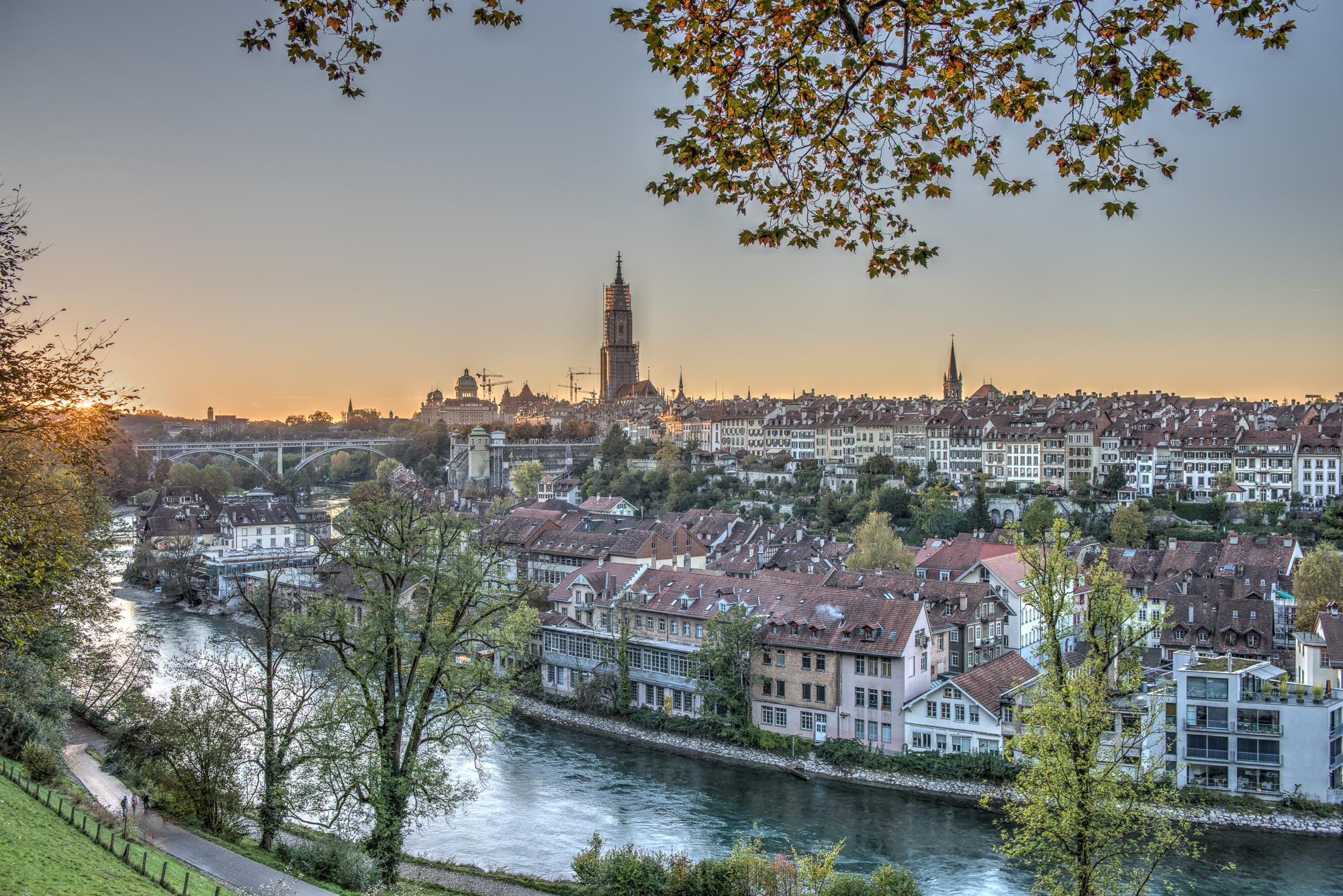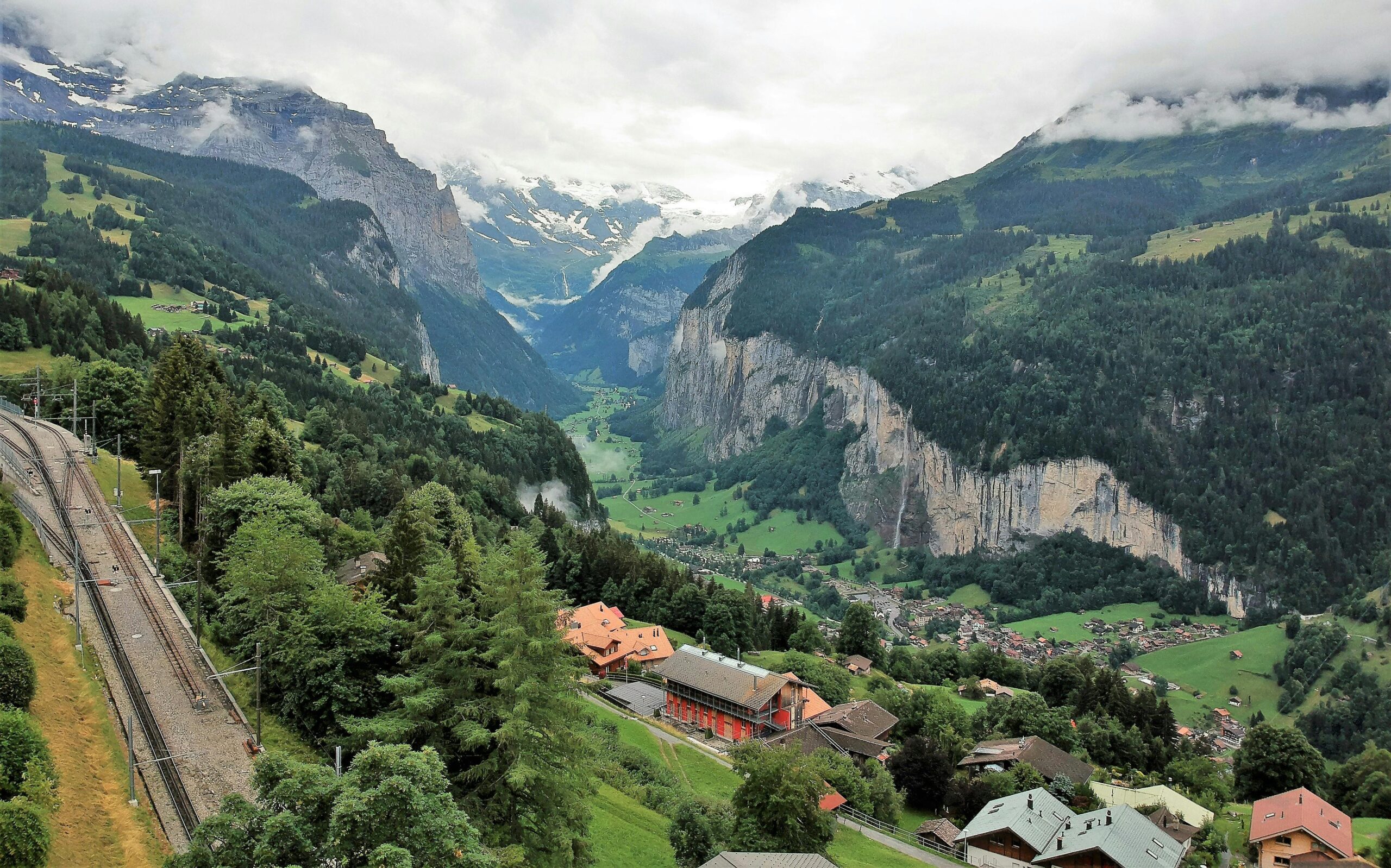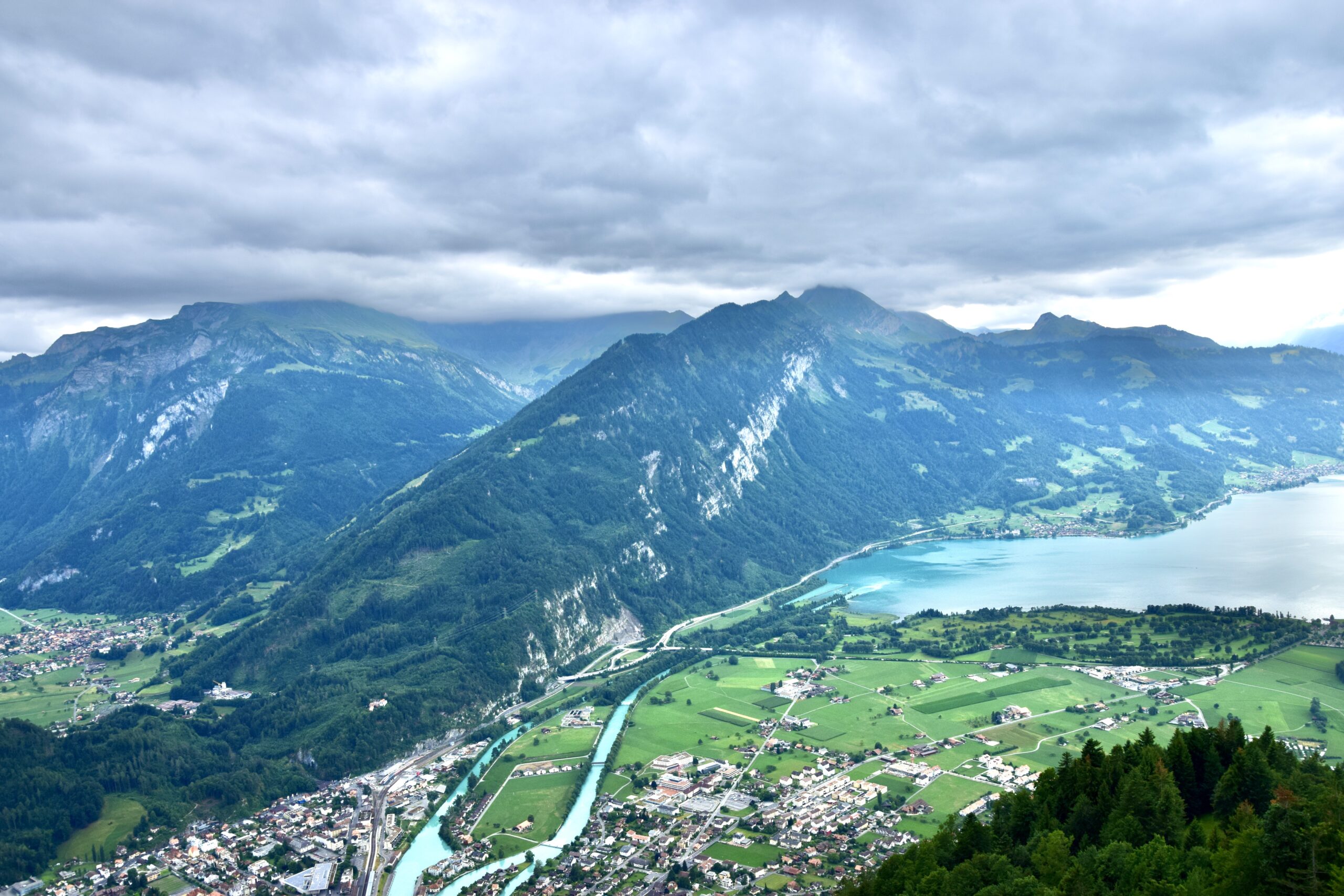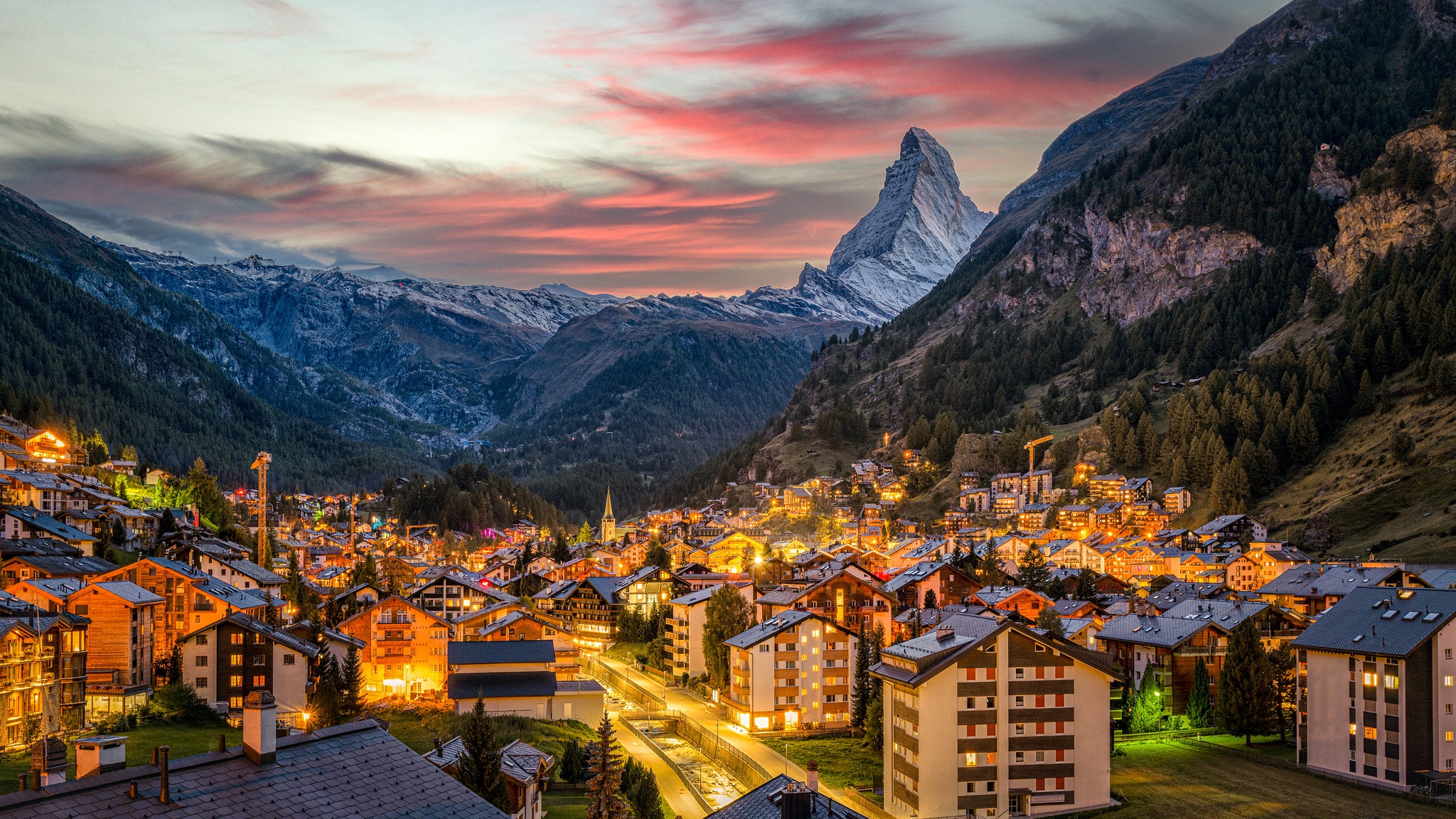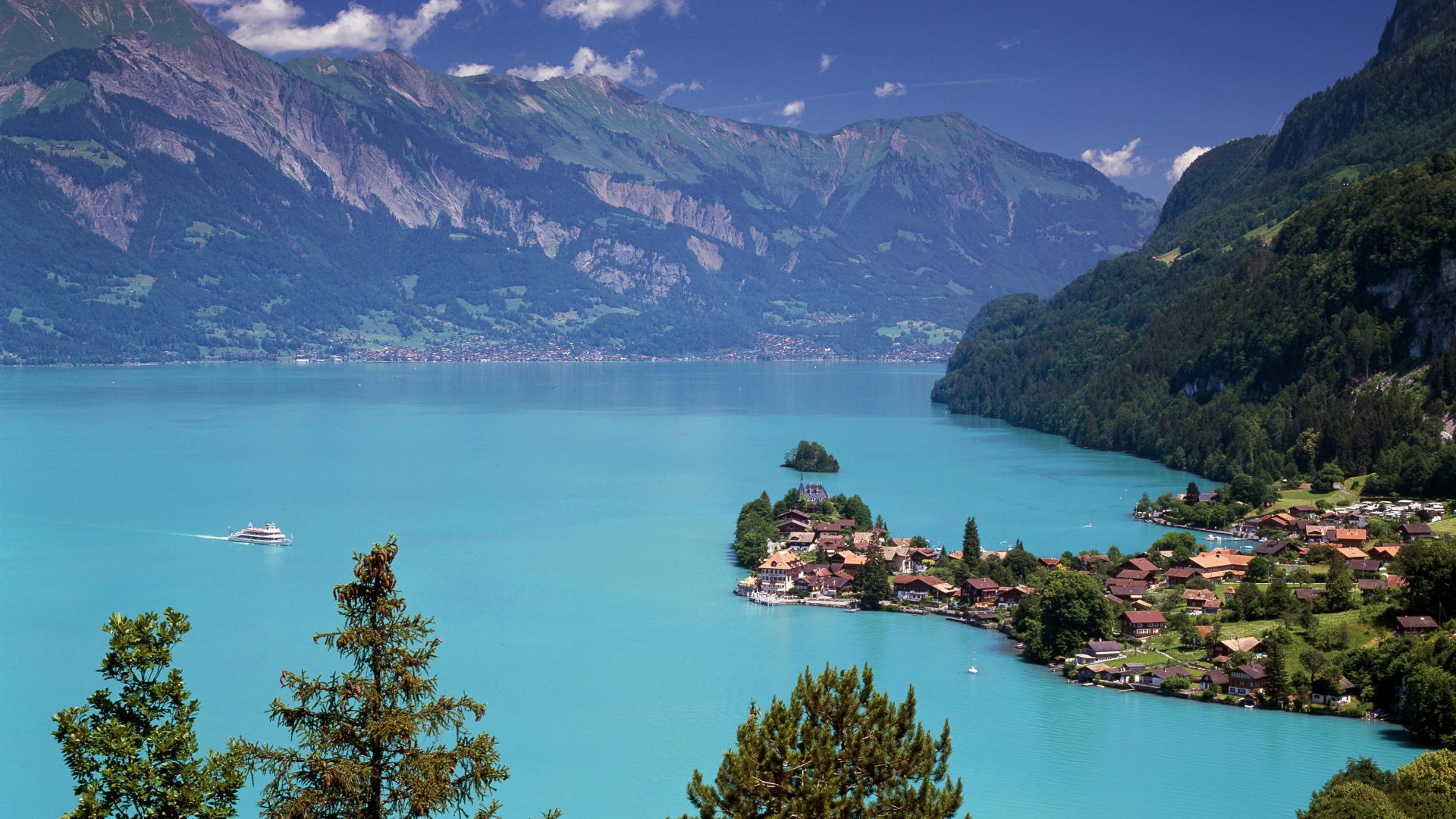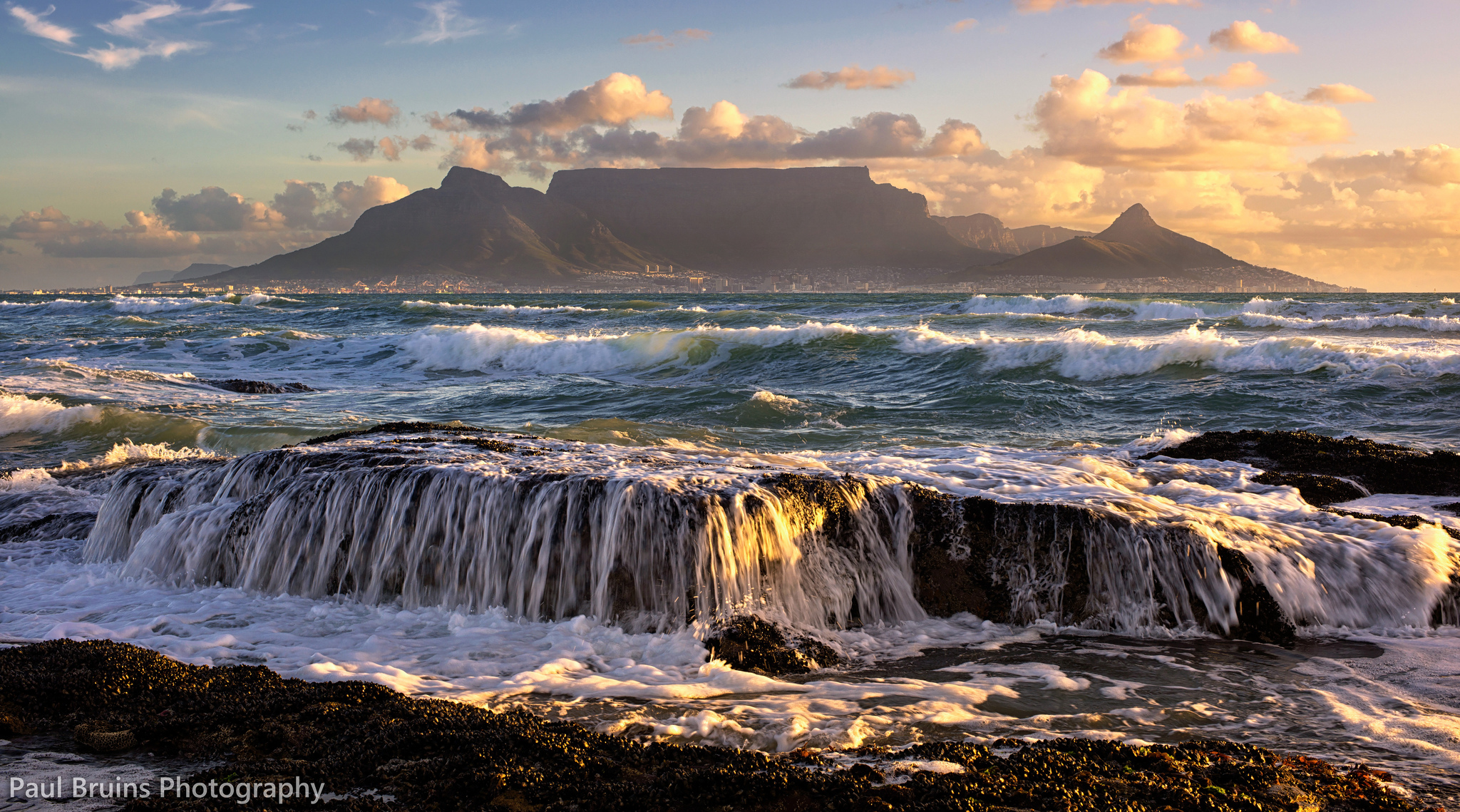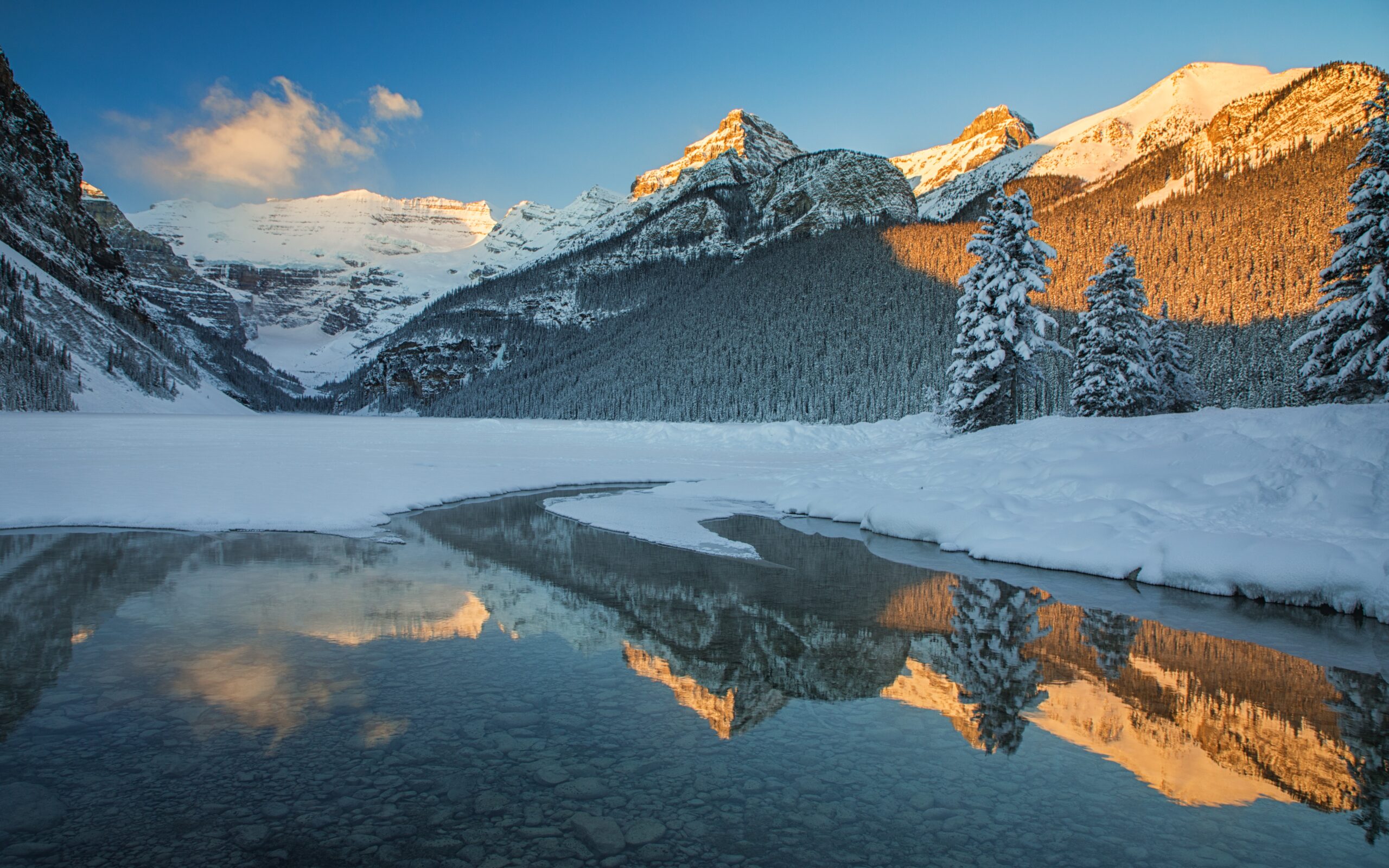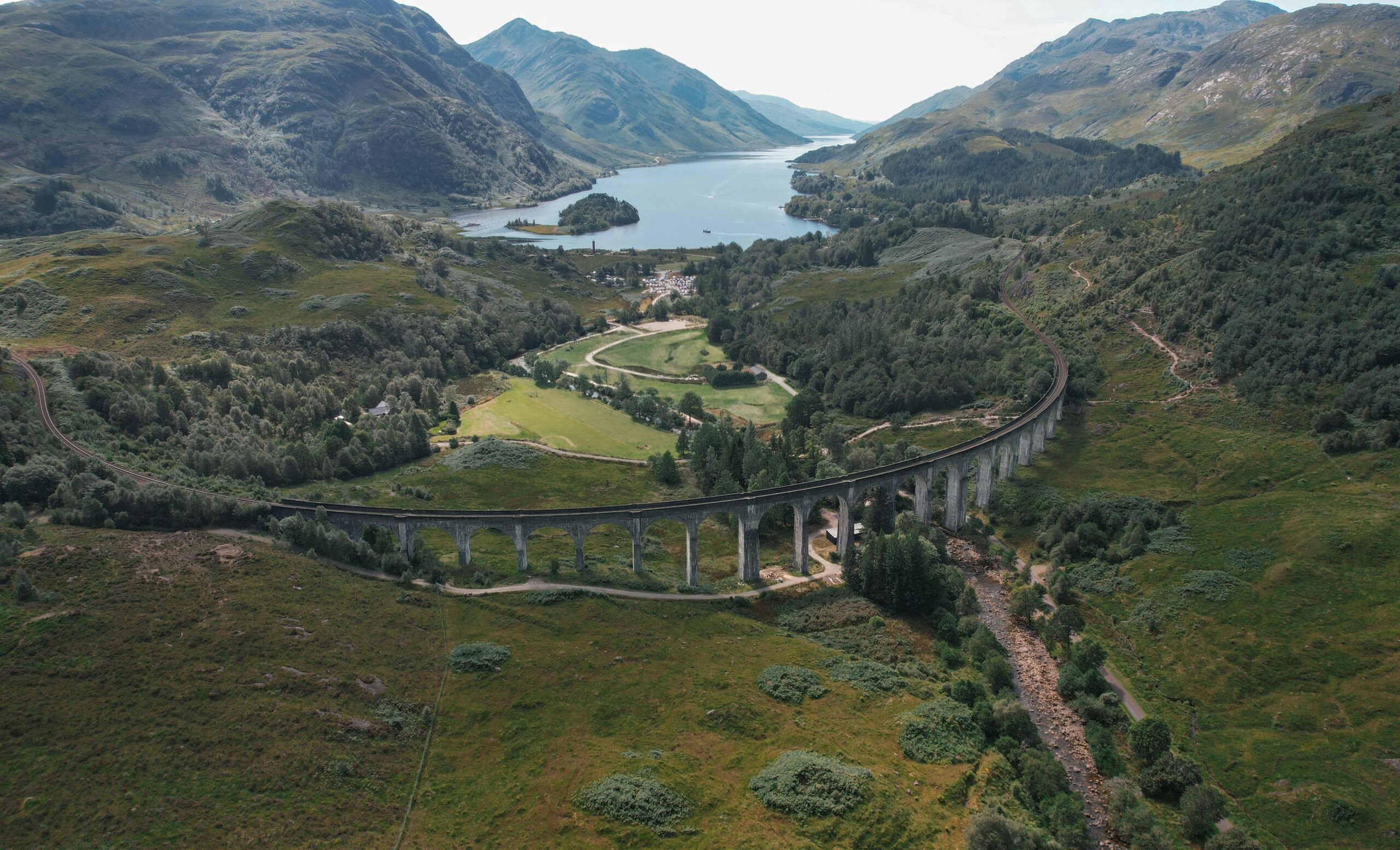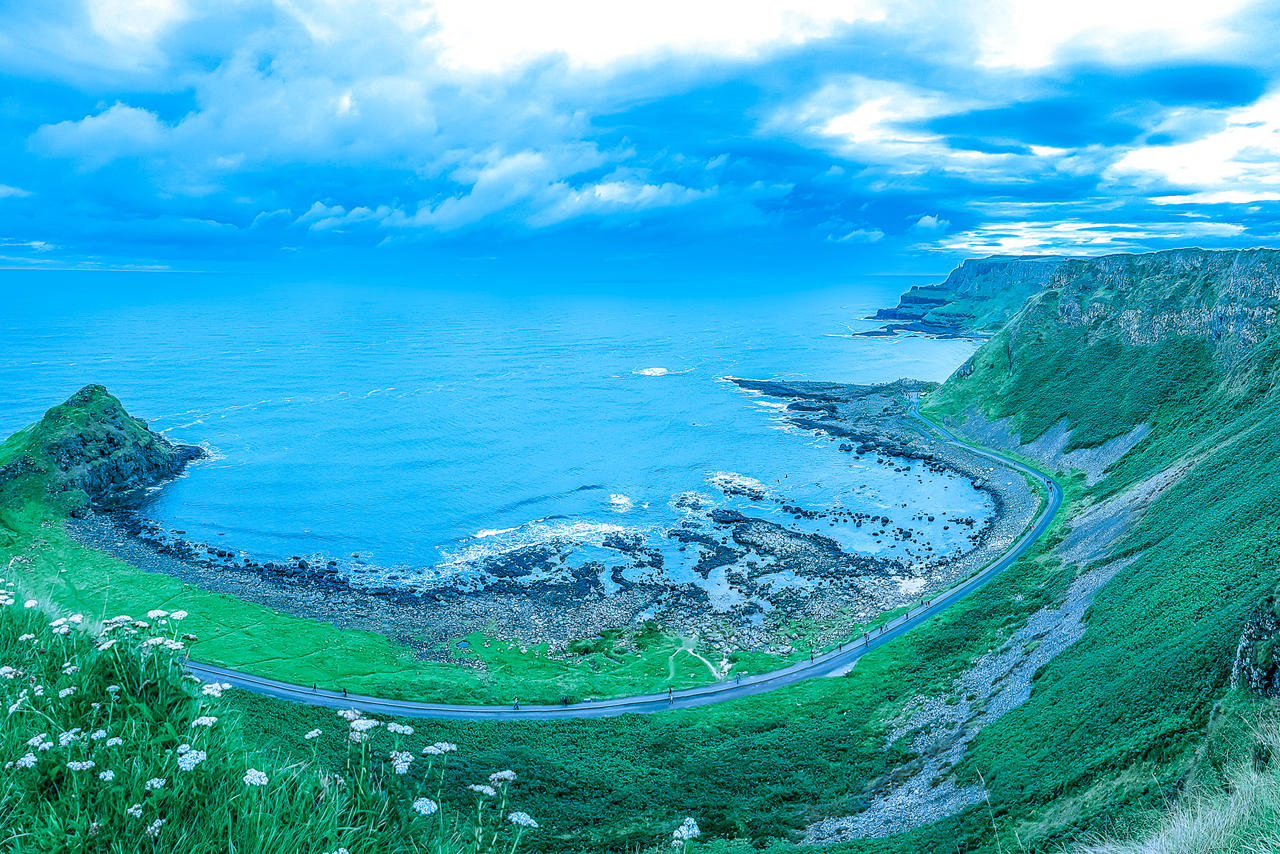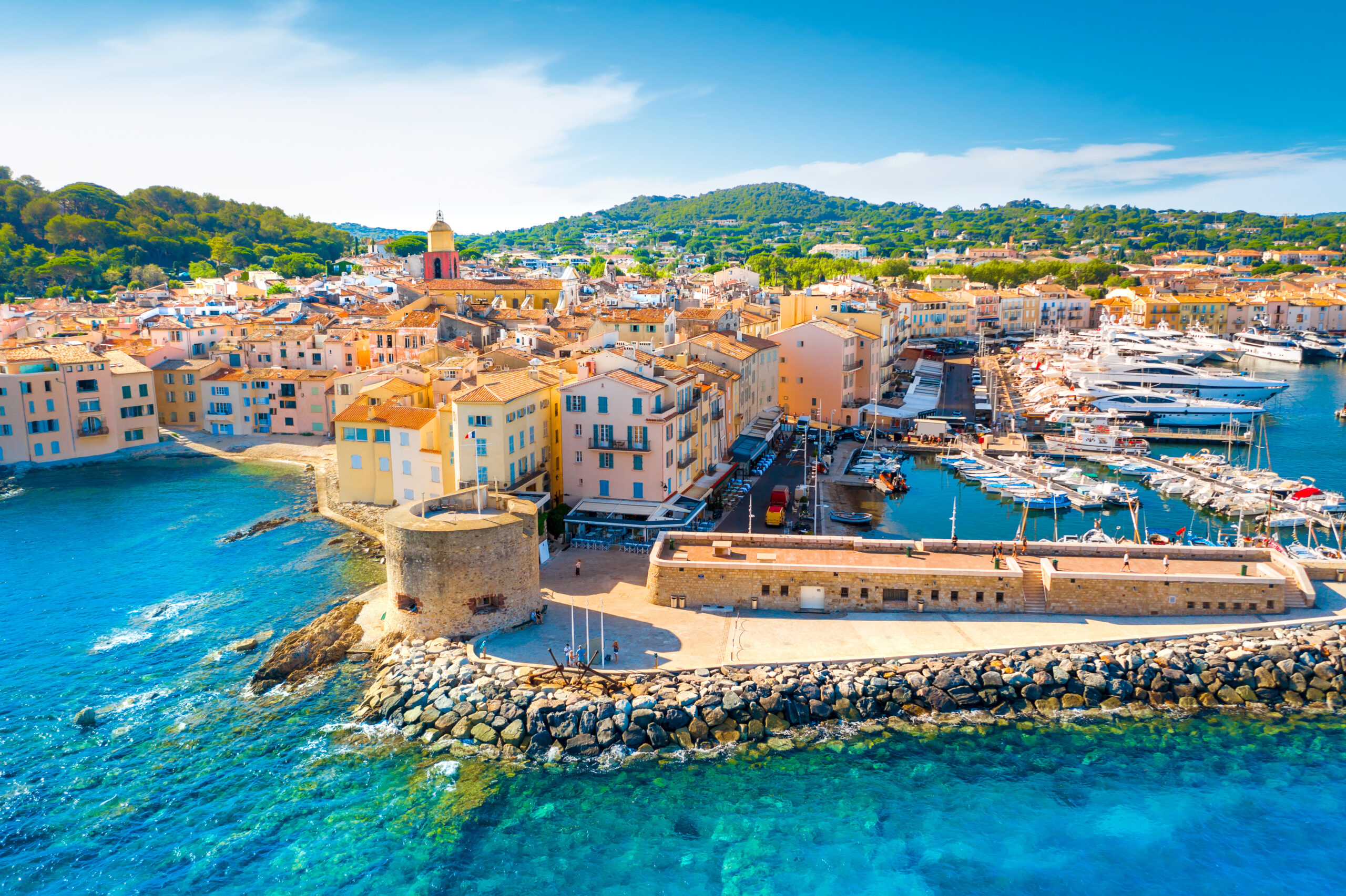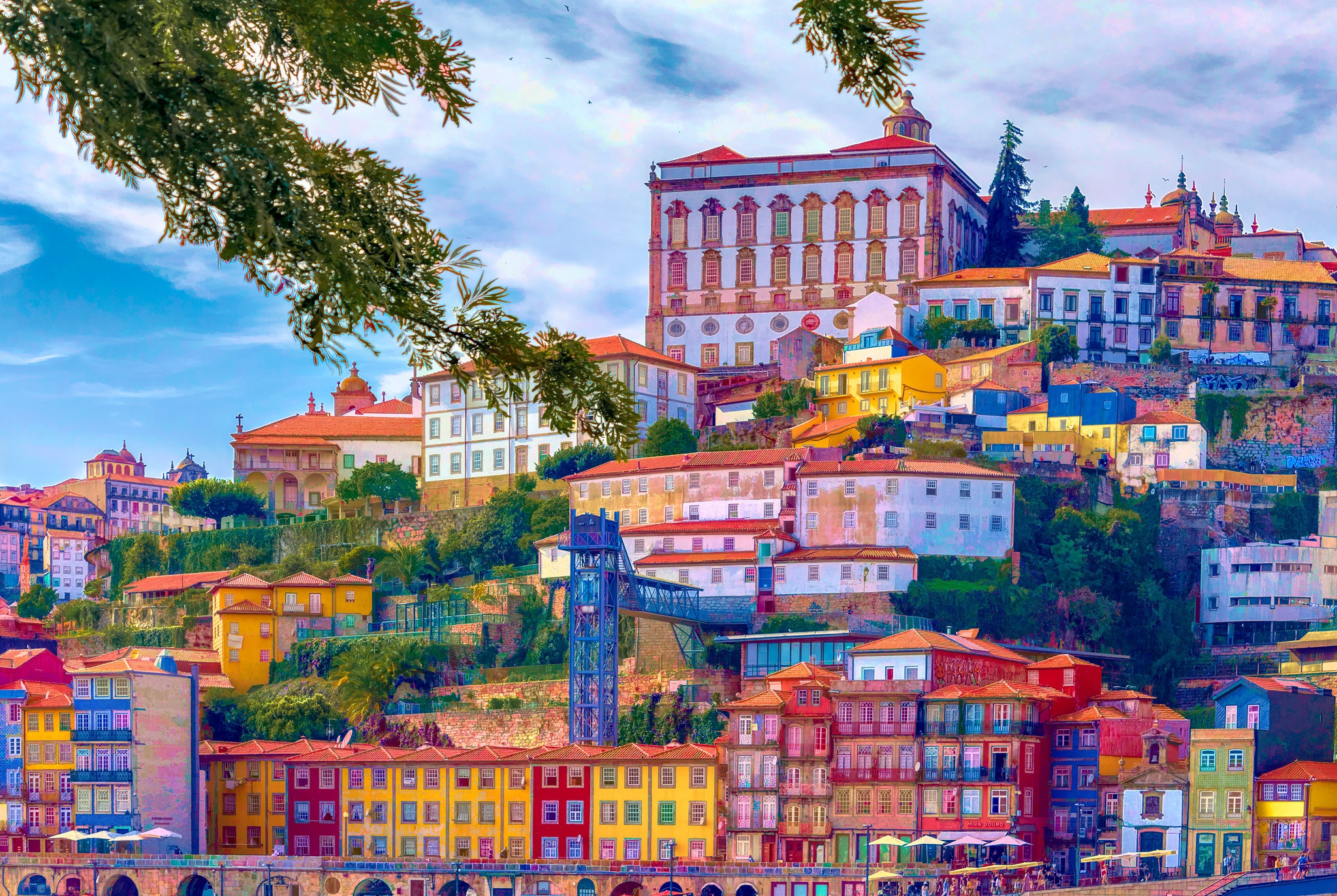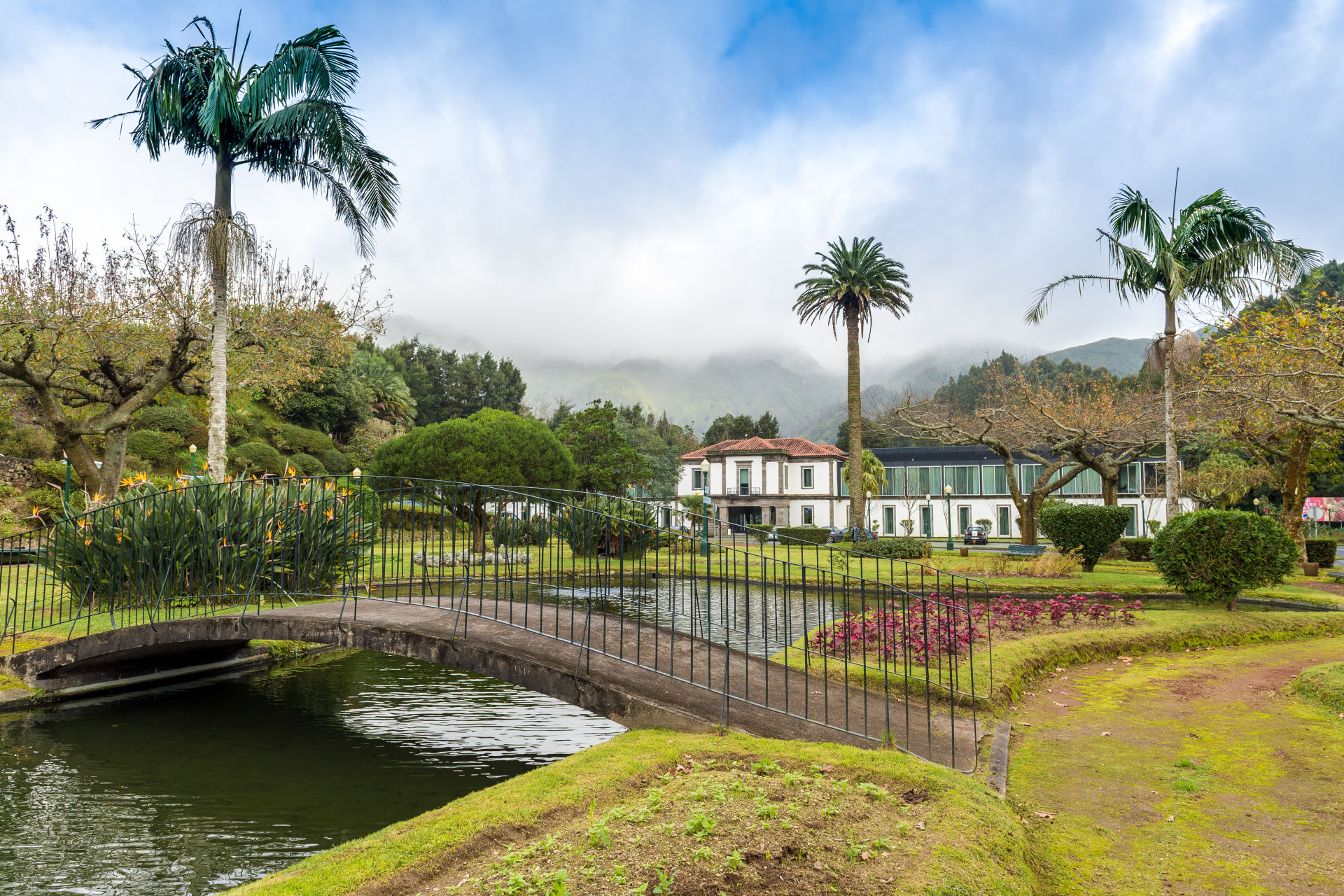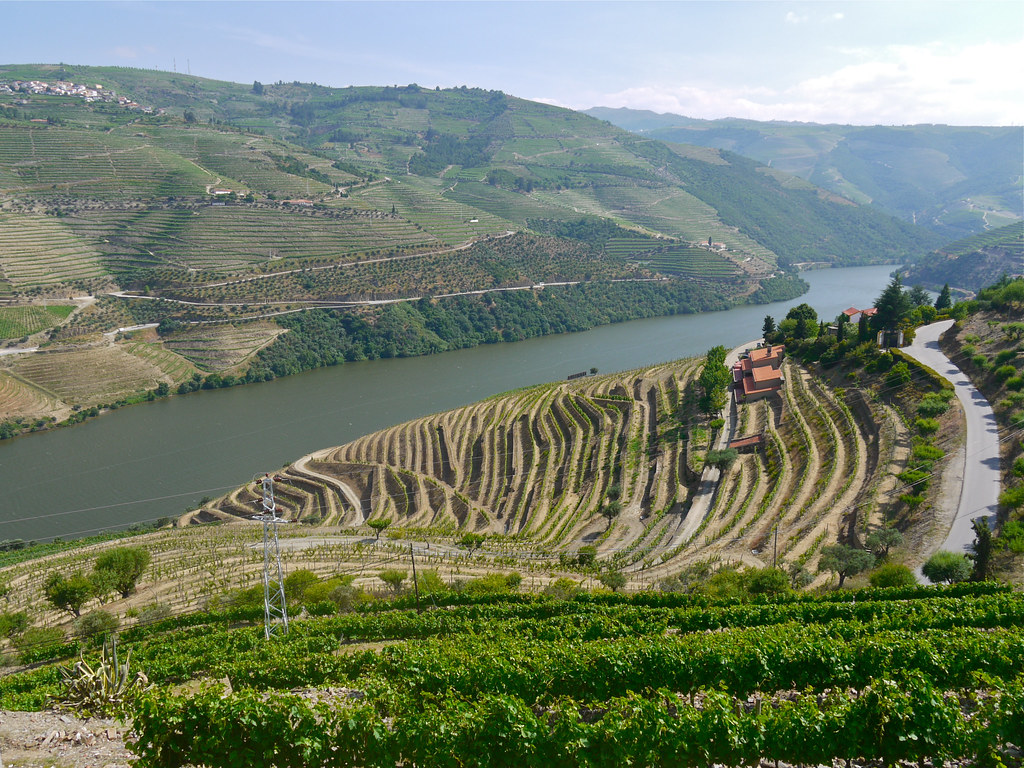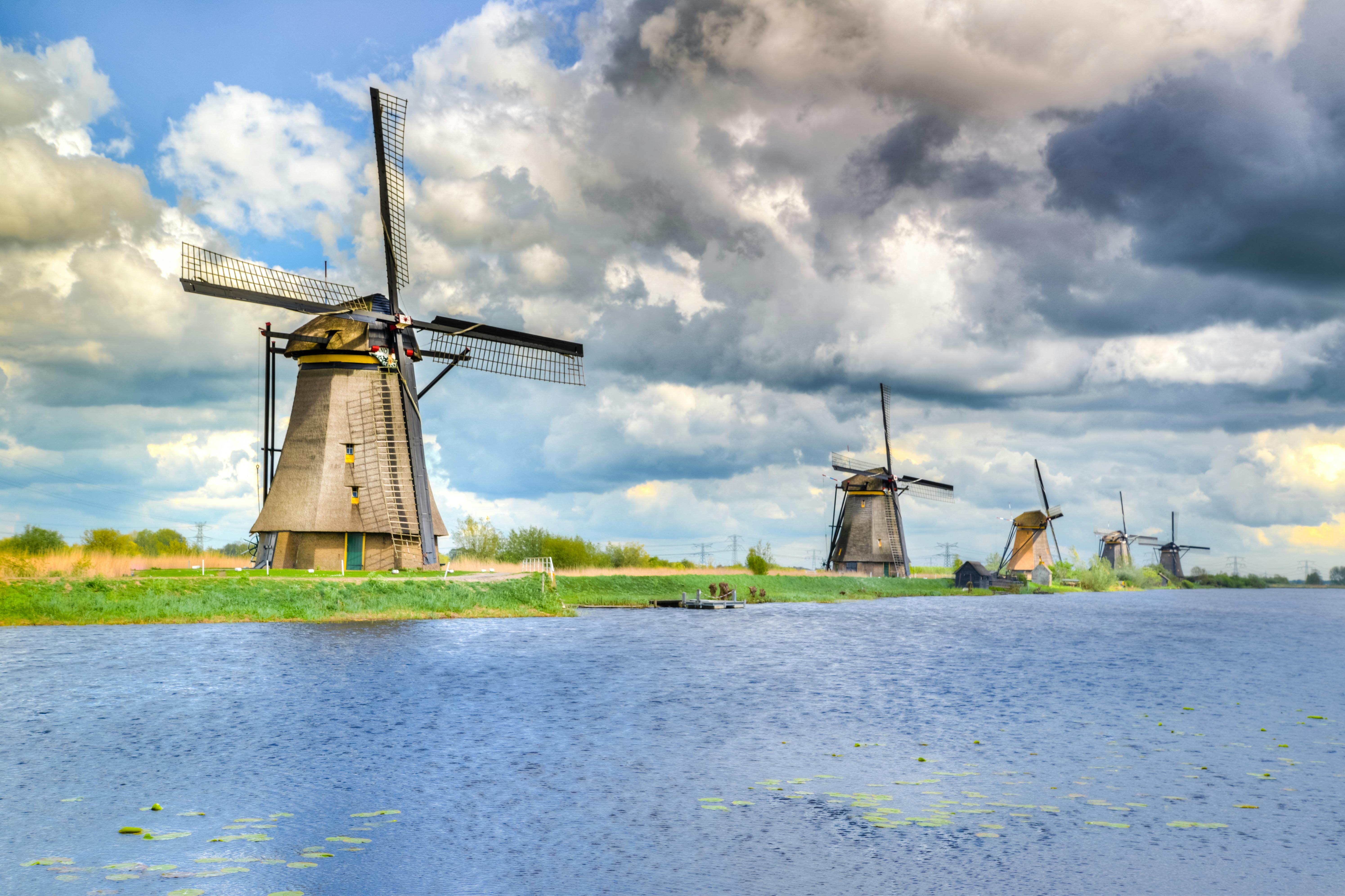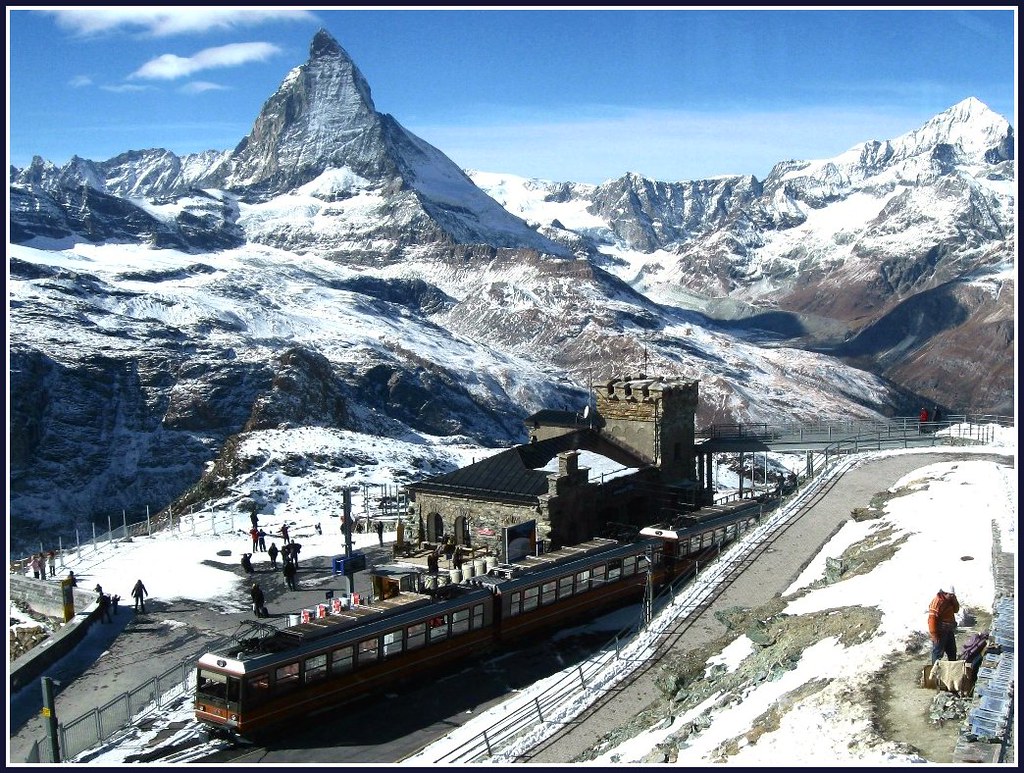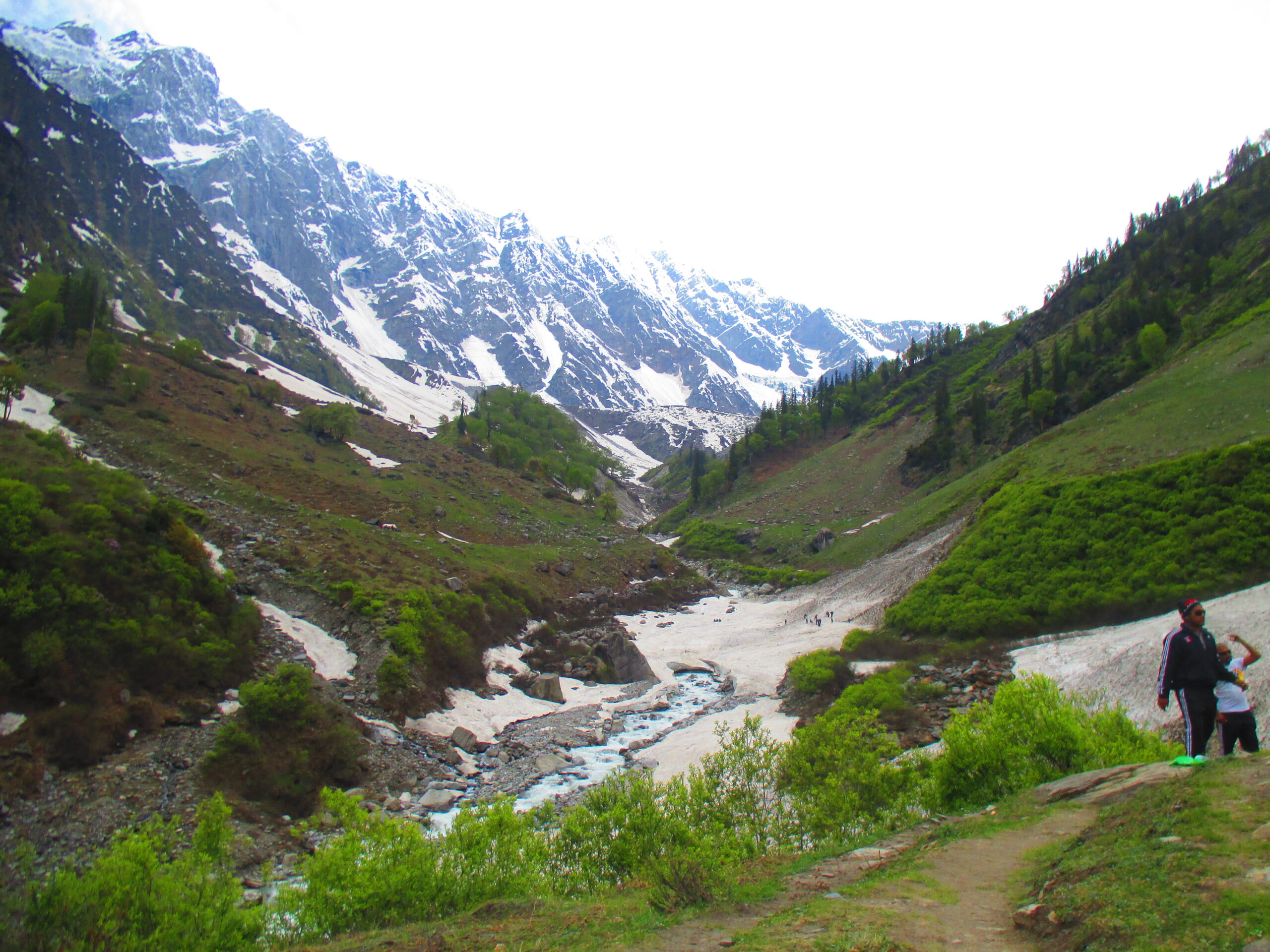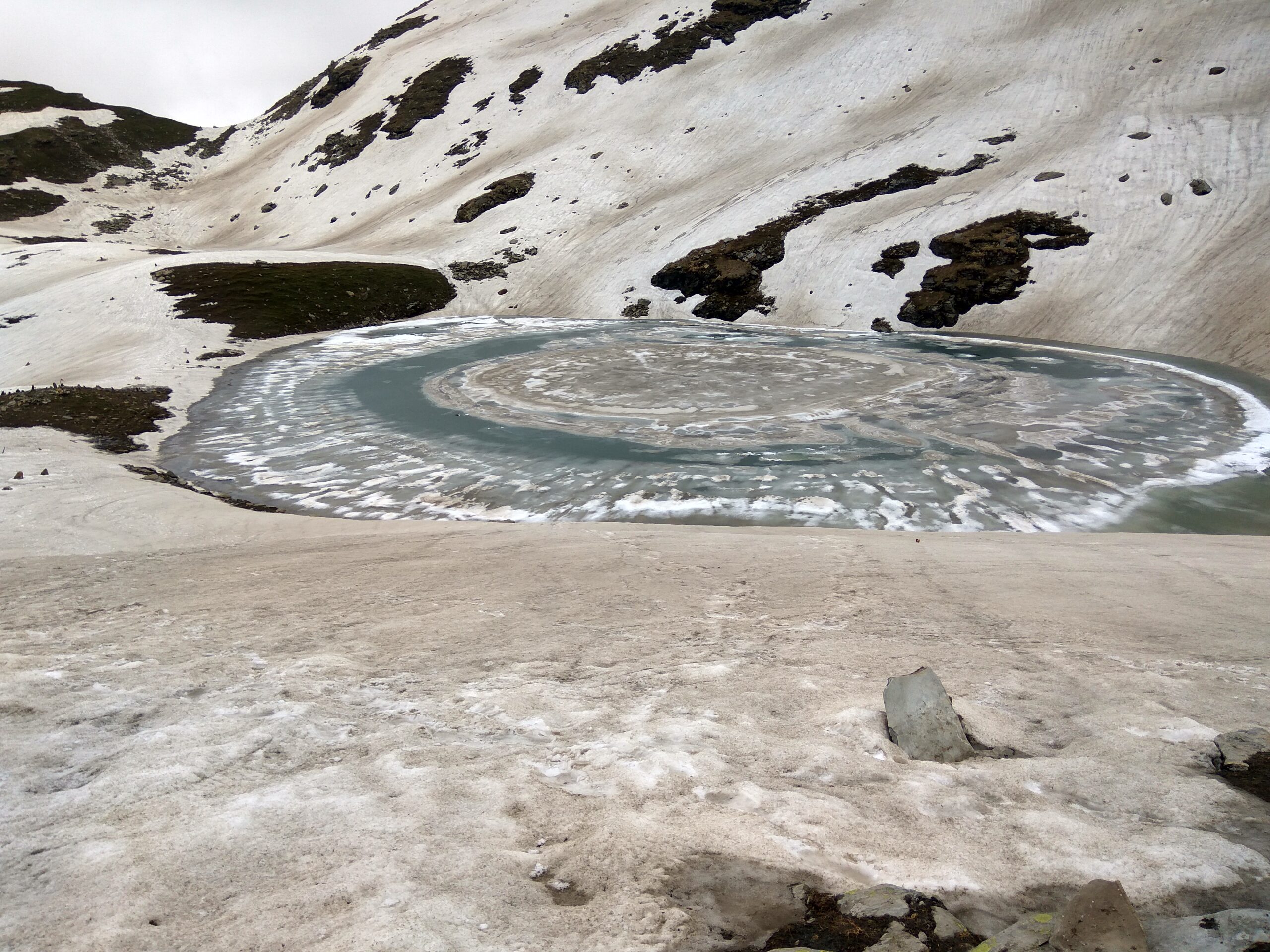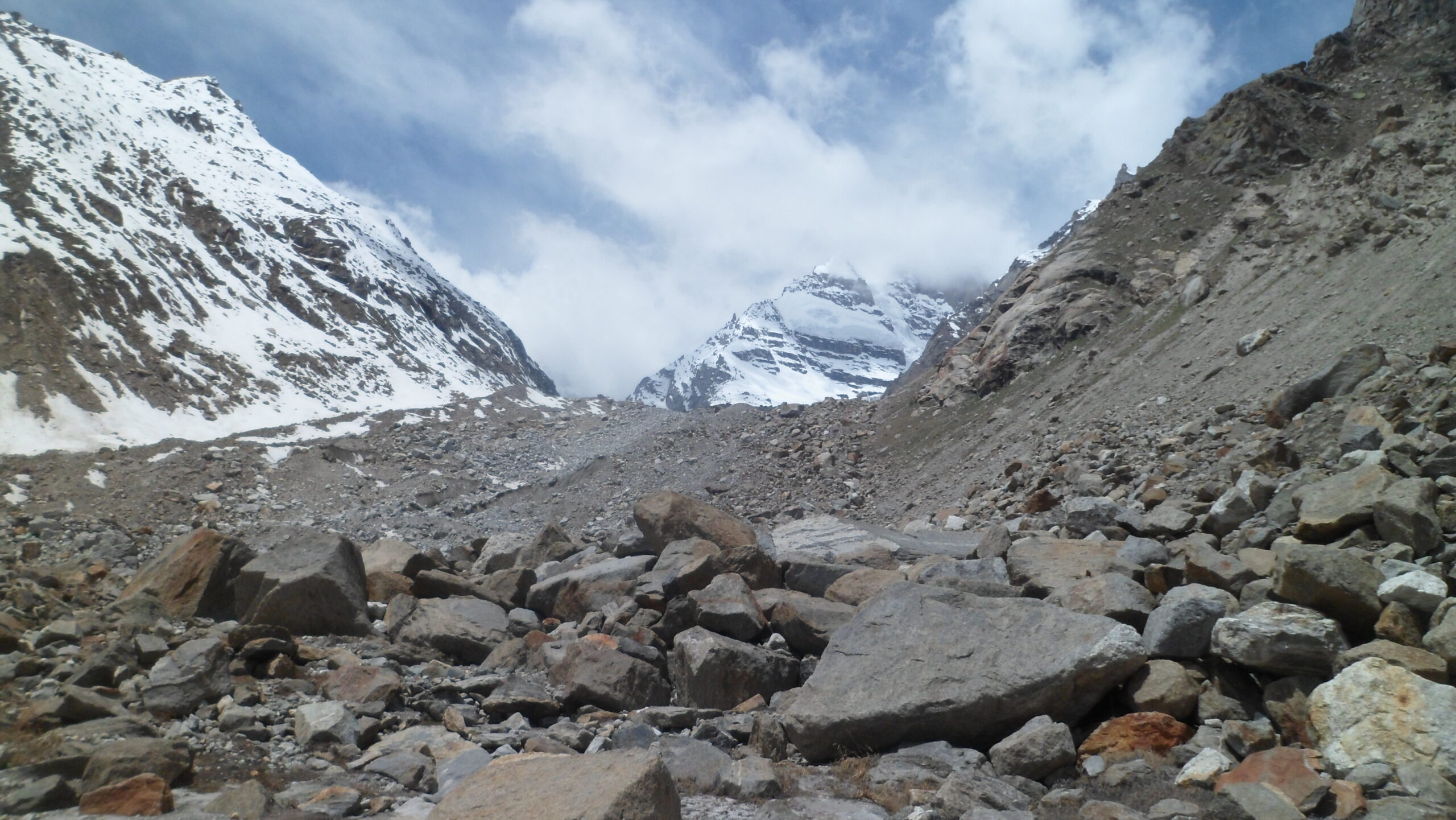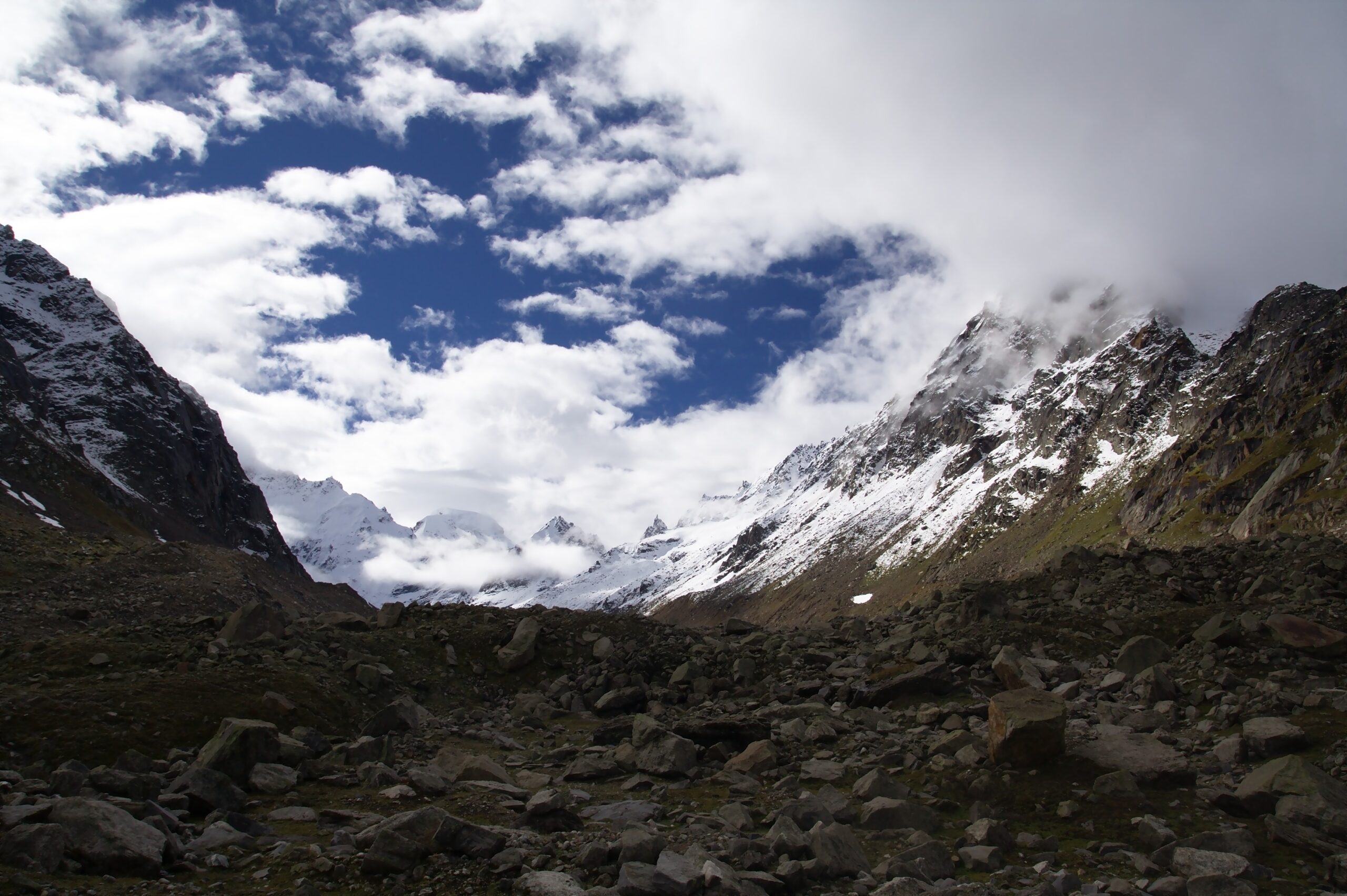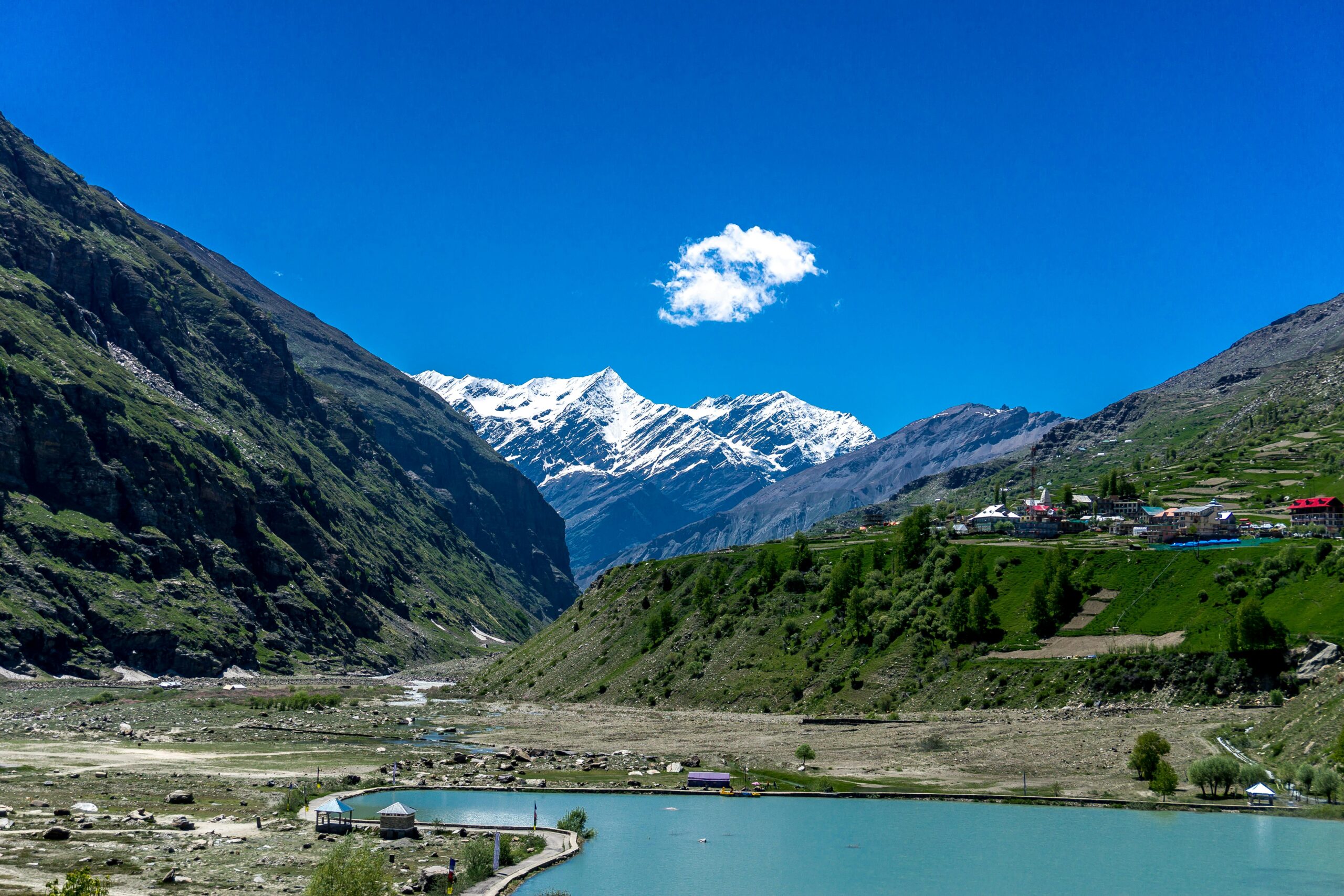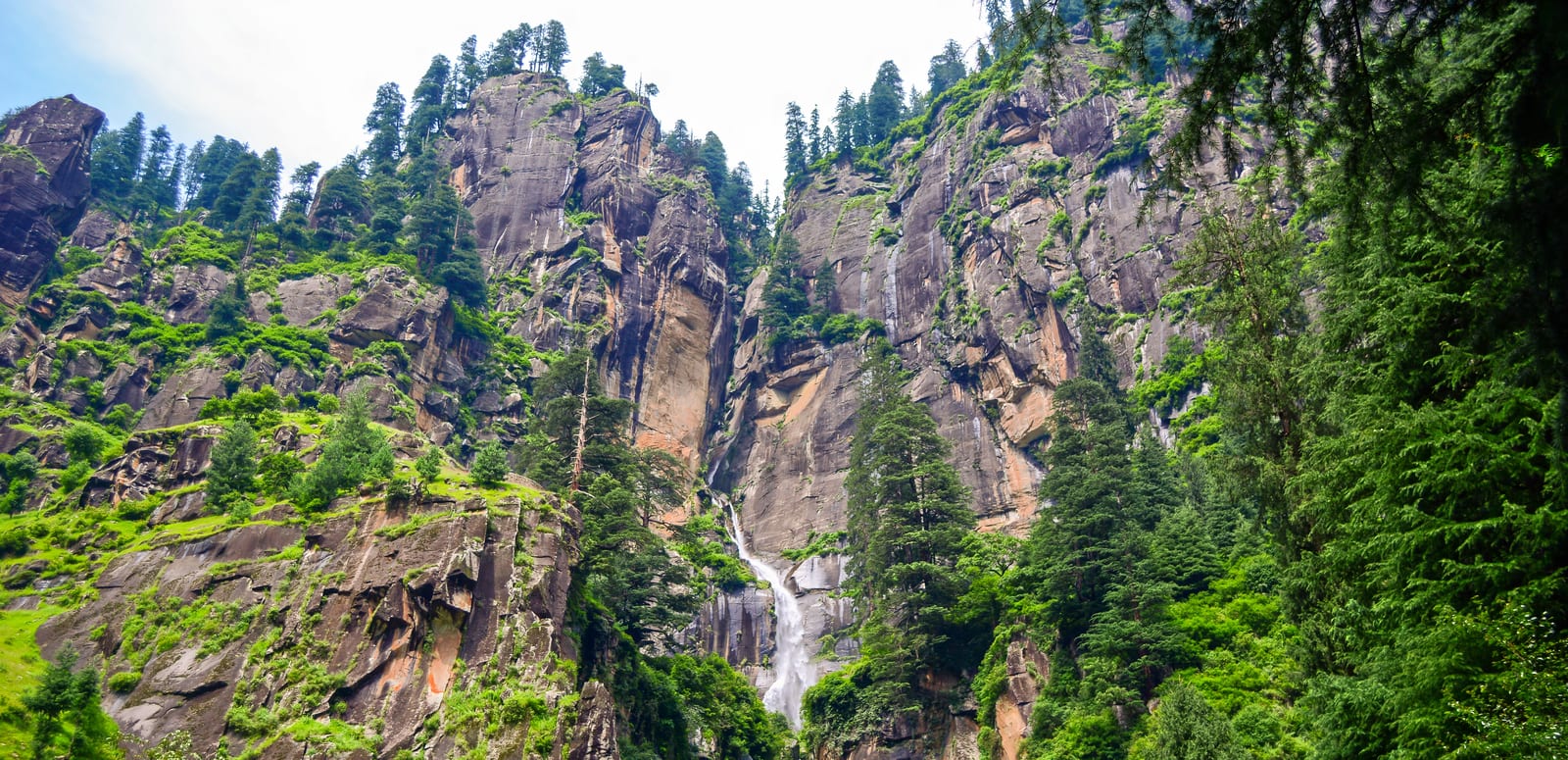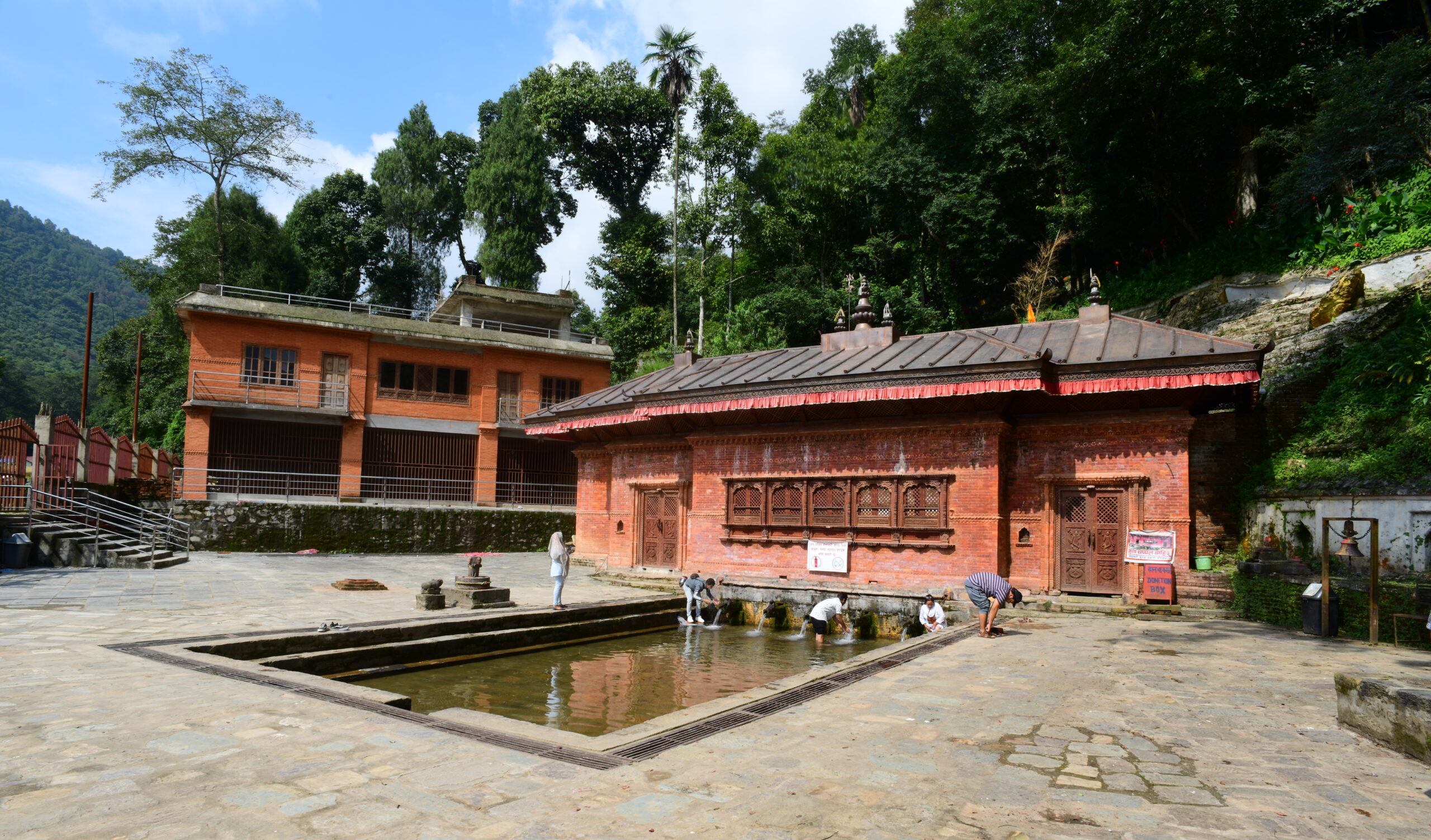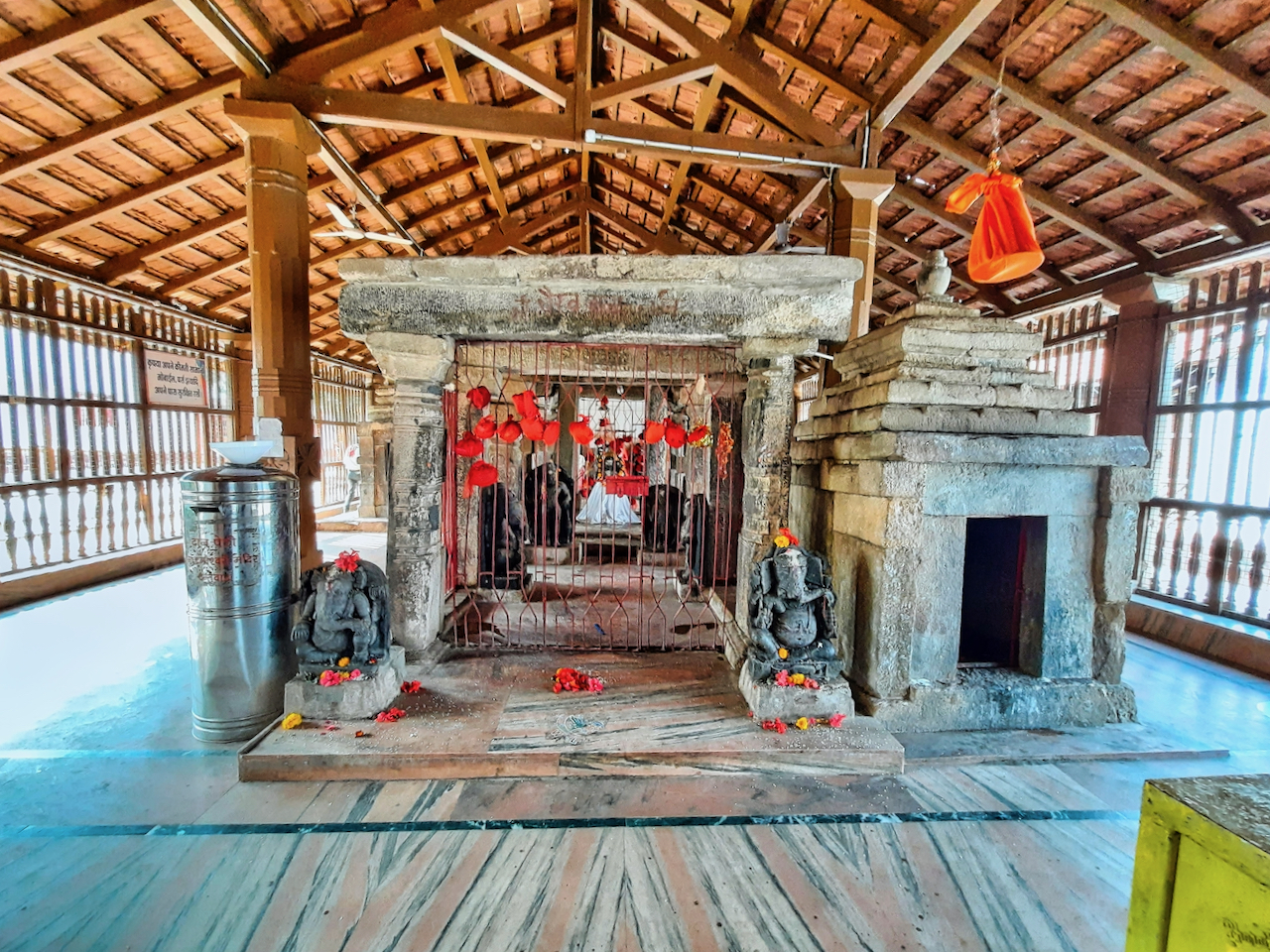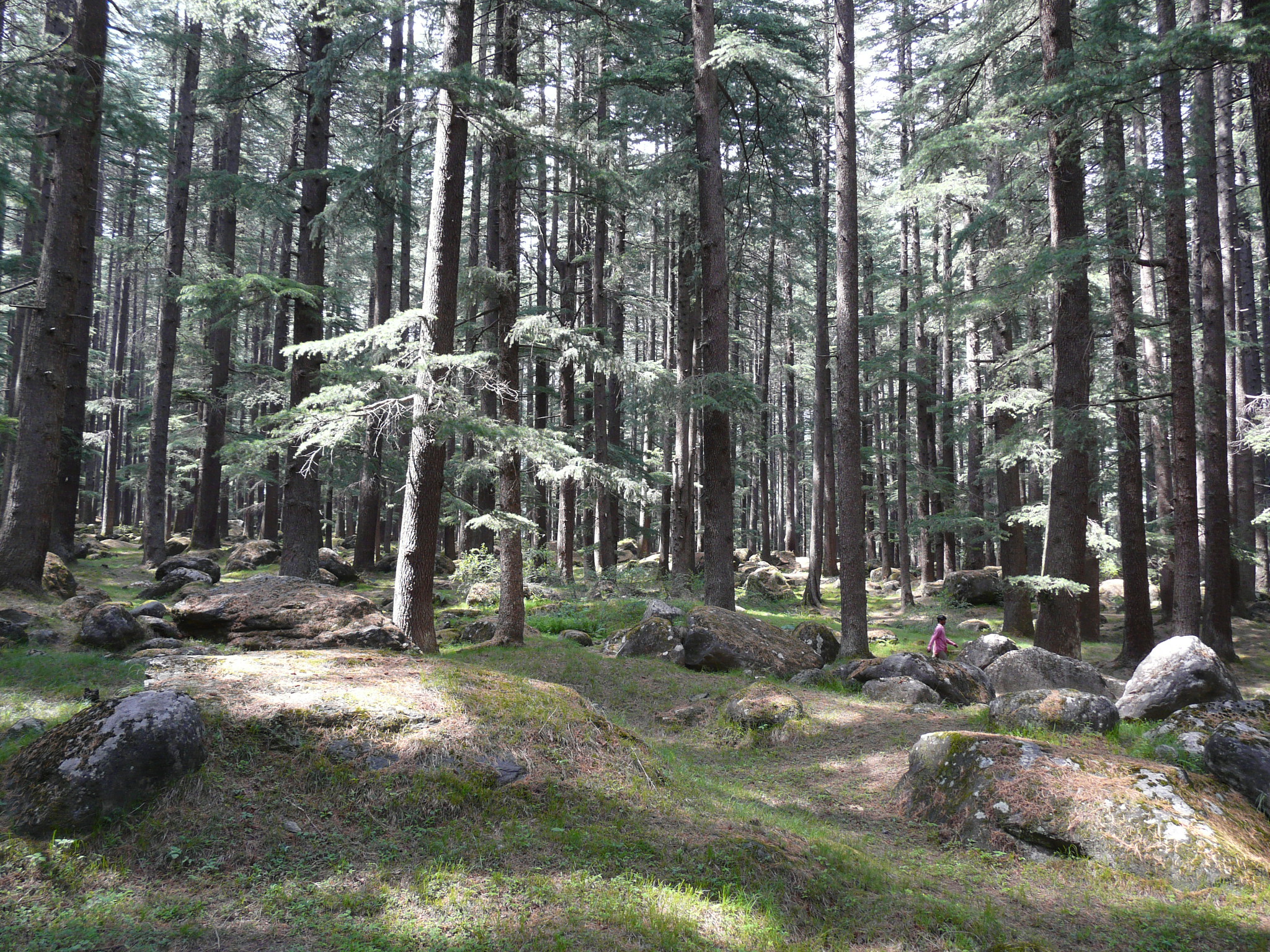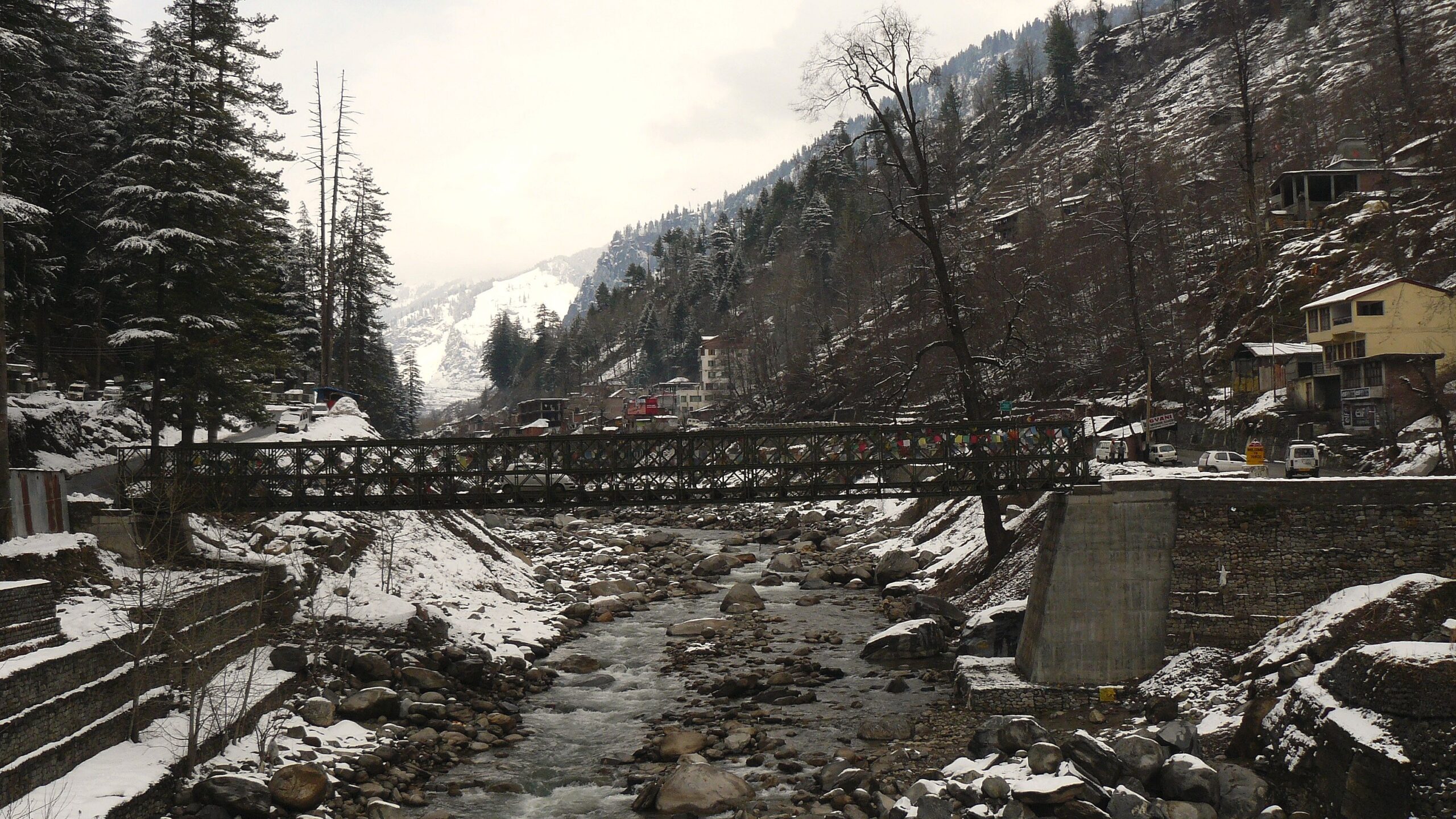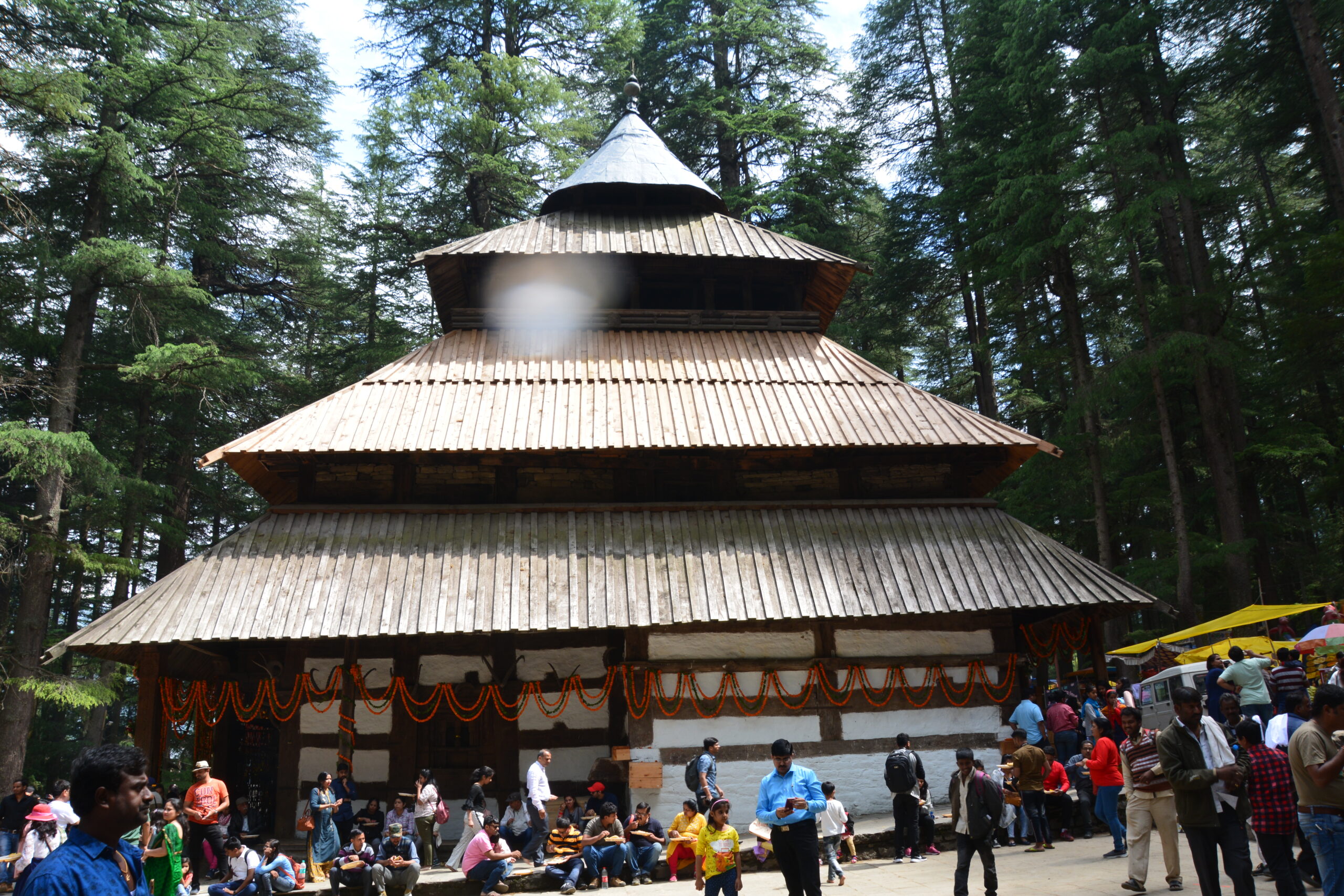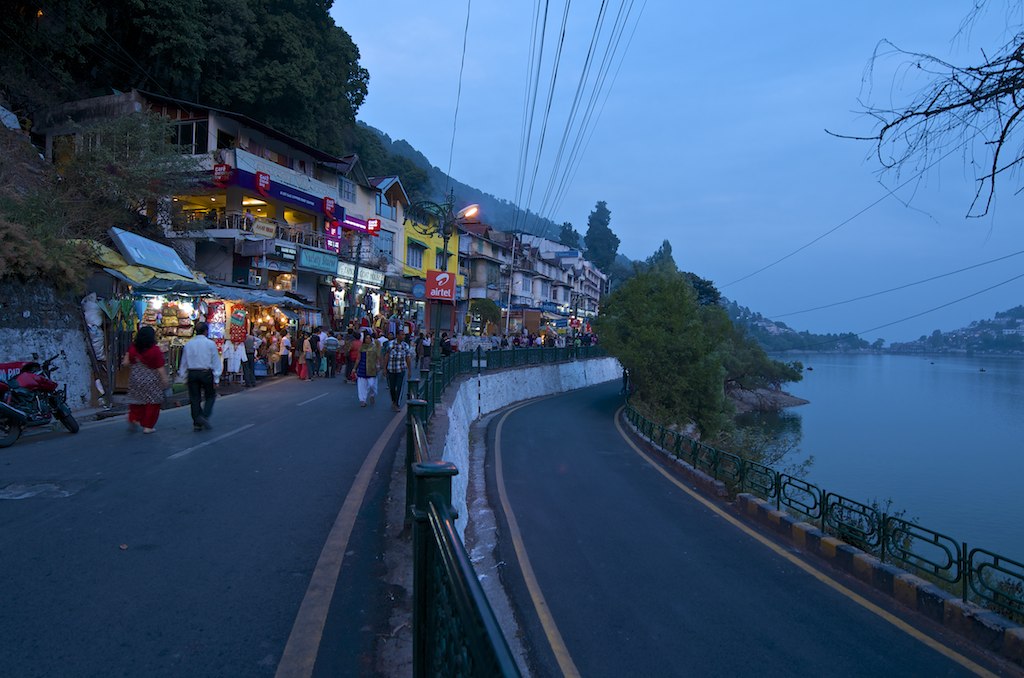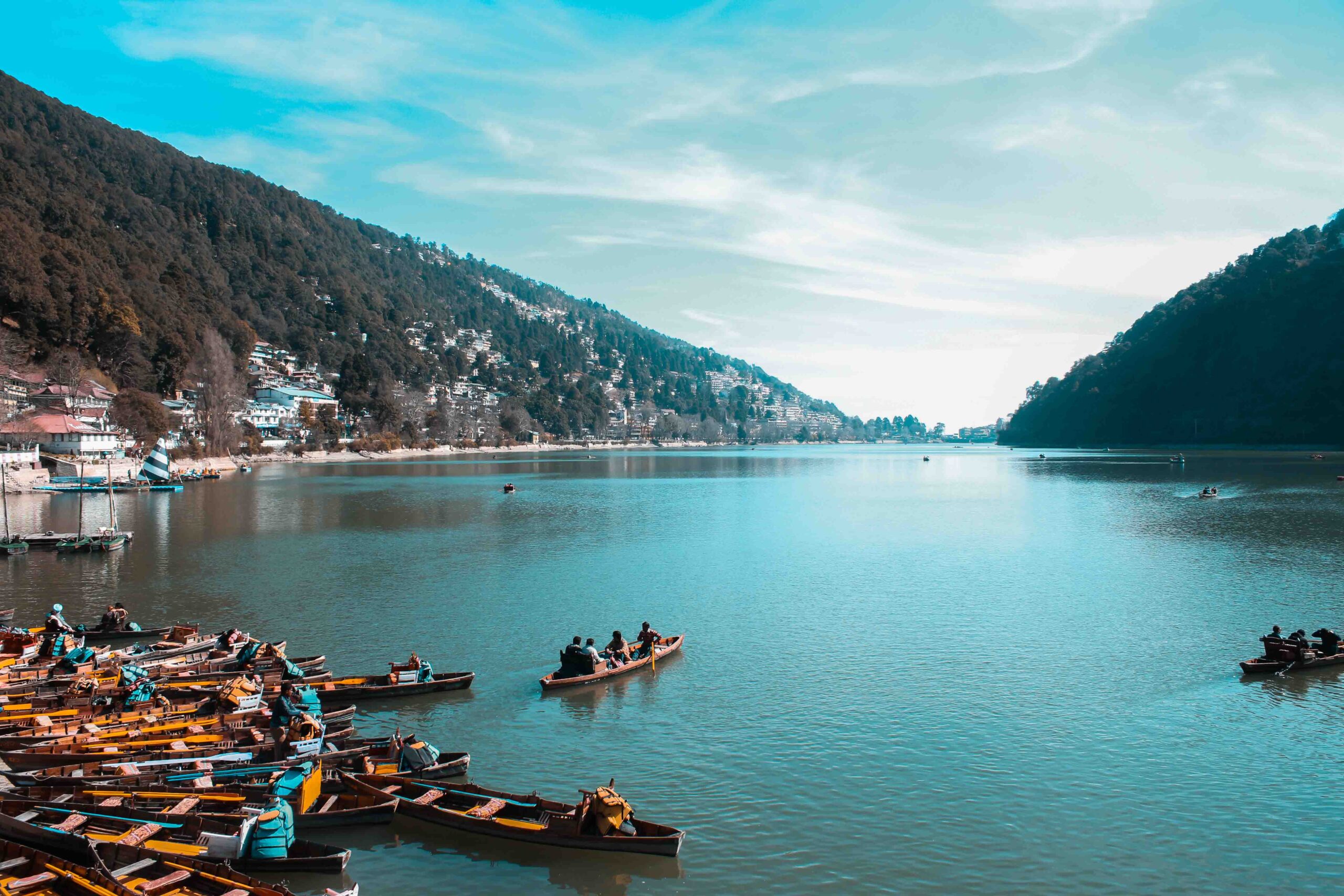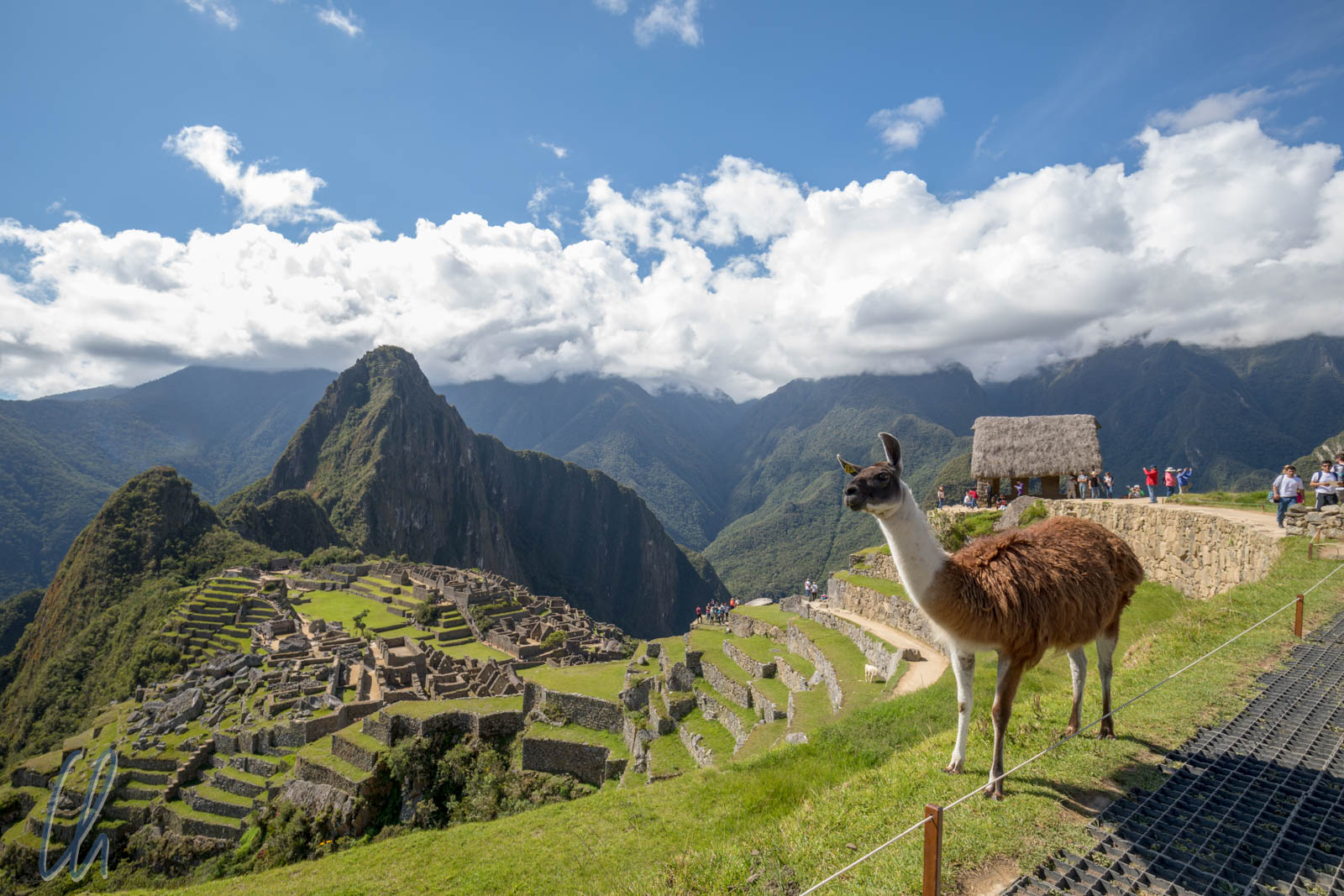
Peru, a land of ancient civilizations, stunning landscapes, and rich cultural heritage, offers some of the most breathtaking destinations in the world. From the majestic Andes to the vibrant Amazon rainforest, this South American gem provides a unique blend of natural wonders and historical treasures.
Most Beautiful Places to Visit in Peru
1. Machu Picchu
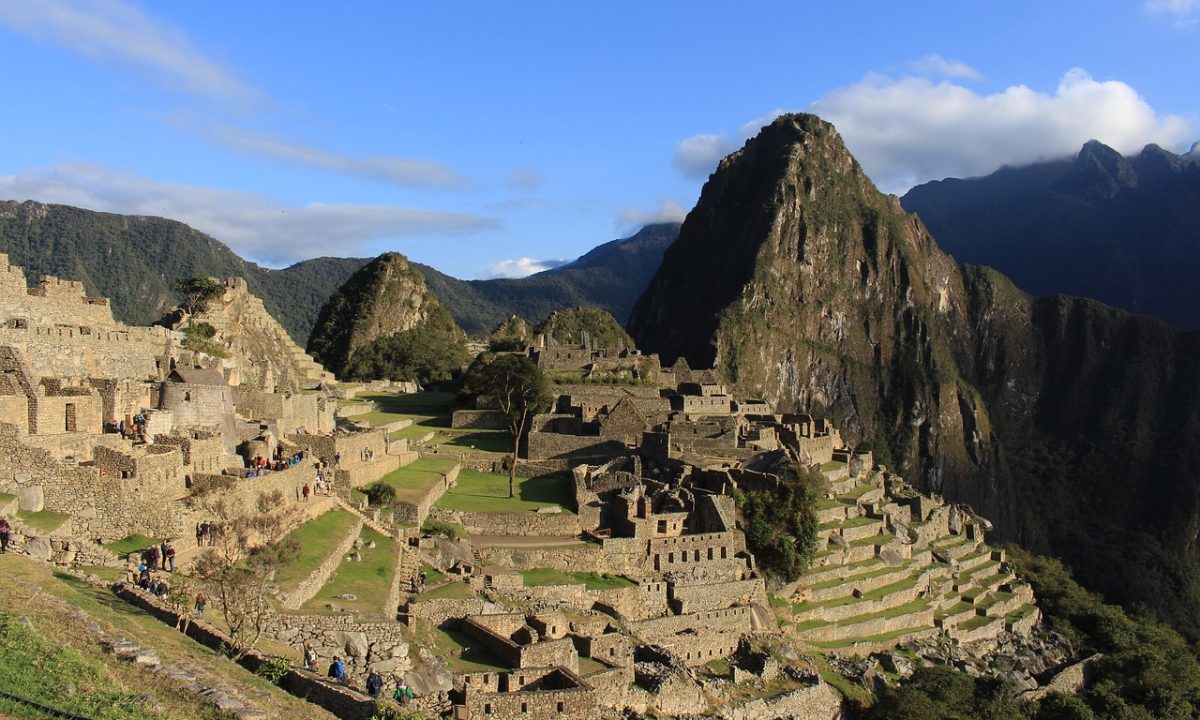
Machu Picchu, the iconic Incan citadel nestled high in the Andes Mountains, is one of the most famous archaeological sites in the world. This ancient city offers a perfect blend of historical significance and breathtaking landscapes, making it one of the most beautiful places to visit in Peru. With its well-preserved ruins, stunning mountain views, and rich cultural heritage, Machu Picchu is a must-visit destination for those exploring Peru.
- Ancient Incan Ruins: Machu Picchu is known for its well-preserved Incan architecture and terraces.
- Stunning Mountain Views: The citadel is surrounded by dramatic peaks, including Huayna Picchu and Machu Picchu Mountain.
- Rich Cultural Heritage: Machu Picchu is a UNESCO World Heritage Site and one of the New Seven Wonders of the World.
- Scenic Hiking Trails: The area offers numerous hiking opportunities, including the famous Inca Trail.
- Lush Vegetation: The site is located in a cloud forest, featuring diverse flora and fauna.
- Historical Significance: Machu Picchu was an important religious, ceremonial, and astronomical center for the Inca civilization.
- Explore the Ruins: Wander through the ancient city and admire the well-preserved temples, terraces, and plazas.
- Hike Huayna Picchu: Climb to the top of this iconic peak for panoramic views of Machu Picchu.
- Take the Inca Trail: Embark on a multi-day trek to Machu Picchu, passing through stunning landscapes and archaeological sites.
- Visit the Sun Gate (Inti Punku): Hike to this viewpoint for a breathtaking sunrise over Machu Picchu.
- Photography: Capture the stunning ruins, dramatic mountain views, and lush vegetation.
- Learn about Incan History: Take a guided tour to learn about the history and significance of Machu Picchu.
- Bird Watching: Spot various bird species, including the Andean condor, in the surrounding cloud forest.
- How to Reach: Take a train from Cusco to Aguas Calientes, then a bus or hike to Machu Picchu. Alternatively, hike the Inca Trail.
- Local Transportation: Buses and taxis are available in Aguas Calientes. Hiking is also a popular way to explore the area.
- Accommodation: Options range from luxury hotels like the Belmond Sanctuary Lodge to budget hostels and guesthouses in Aguas Calientes.
- Local Cuisine: Try local dishes like ceviche, lomo saltado, and quinoa soup. Visit local restaurants for a taste of Peruvian cuisine.
- Budget: Mid-range; around $150-200 per day.
- Best Time to Visit: April to October for the best weather and hiking conditions.
- Booking Process: Book entry tickets, train tickets, and accommodations in advance, especially during peak season.
- Additional Travel Tips: Bring comfortable hiking shoes, a raincoat, and plenty of water. The weather can be unpredictable, so be prepared for changing conditions.
2. Cusco
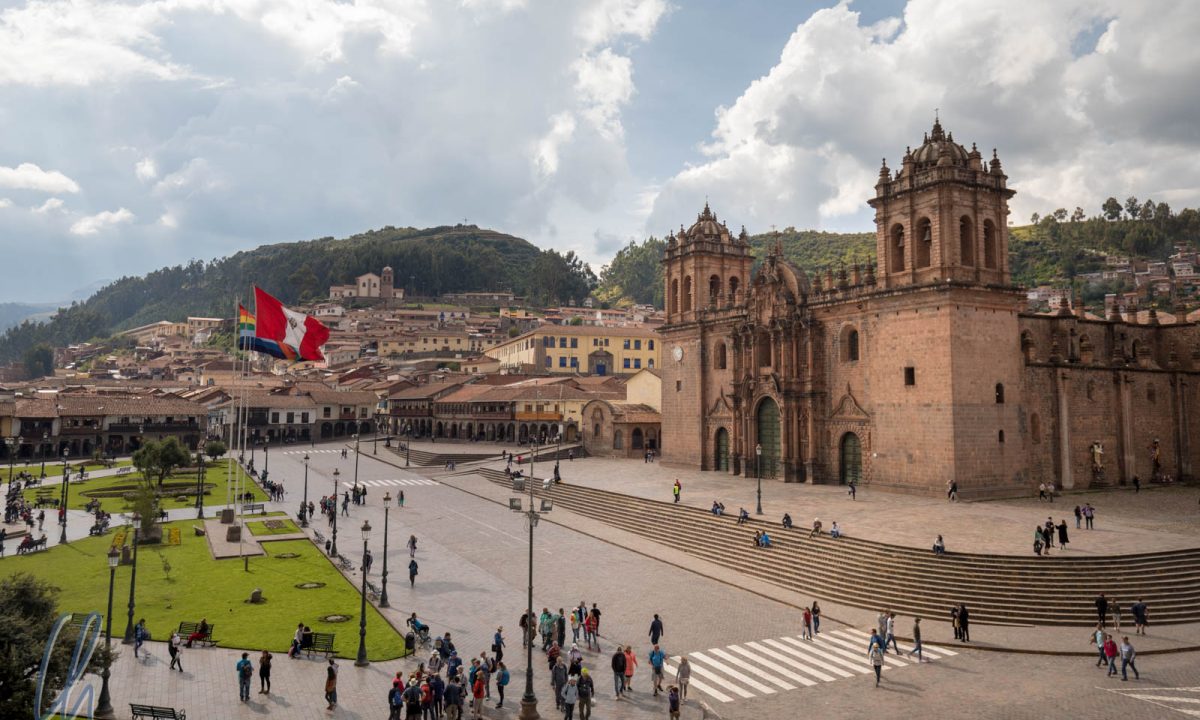
Cusco, the historic capital of the Inca Empire, is a vibrant city known for its rich cultural heritage, stunning architecture, and lively atmosphere. This charming city offers a perfect blend of ancient history and modern amenities, making it one of the most beautiful places to visit in Peru. With its well-preserved colonial buildings, bustling markets, and vibrant festivals, Cusco is a must-visit destination for those exploring Peru.
- Rich Cultural Heritage: Cusco is a UNESCO World Heritage Site and one of the oldest continuously inhabited cities in the Americas.
- Stunning Architecture: The city features well-preserved Incan and Spanish colonial buildings.
- Vibrant Markets: Cusco is known for its bustling markets, offering a wide range of handicrafts, textiles, and local produce.
- Lively Festivals: The city hosts numerous festivals and events, including Inti Raymi and Corpus Christi.
- Scenic Surroundings: Cusco is surrounded by stunning landscapes, including the Sacred Valley and the Andes Mountains.
- Historical Significance: Cusco was the capital of the Inca Empire and an important cultural and religious center.
- Explore the Historic Center: Wander through the narrow streets and admire the well-preserved colonial buildings.
- Visit the Plaza de Armas: Discover the heart of Cusco and its iconic landmarks, including the Cusco Cathedral and the Church of La Compañía de Jesús.
- Explore Sacsayhuamán: Visit this impressive Incan fortress overlooking the city.
- Shop at San Pedro Market: Browse the vibrant market for handicrafts, textiles, and local produce.
- Attend a Festival: Experience the lively atmosphere of Cusco’s festivals and events.
- Visit Qorikancha: Explore the Temple of the Sun, an important Incan religious site.
- Hike to Cristo Blanco: Climb to this hilltop statue for panoramic views of Cusco.
- How to Reach: Fly into Alejandro Velasco Astete International Airport in Cusco or take a bus from other major cities in Peru.
- Local Transportation: The city is walkable, and taxis and buses are readily available.
- Accommodation: Options range from luxury hotels like the Belmond Hotel Monasterio to budget hostels and guesthouses.
- Local Cuisine: Try local dishes like cuy (guinea pig), alpaca, and rocoto relleno. Visit local restaurants for a taste of Peruvian cuisine.
- Budget: Mid-range; around $100-150 per day.
- Best Time to Visit: April to October for the best weather and festival season.
- Booking Process: Book accommodations and popular attractions in advance, especially during peak season.
- Additional Travel Tips: Acclimate to the altitude before engaging in strenuous activities. Bring comfortable walking shoes and a good camera.
3. Sacred Valley

The Sacred Valley, located near Cusco, is a stunning region known for its picturesque landscapes, ancient Incan ruins, and vibrant traditional culture. This beautiful valley offers a perfect blend of natural beauty and historical significance, making it one of the most beautiful places to visit in Peru. With its terraced fields, charming villages, and well-preserved archaeological sites, the Sacred Valley is a must-visit destination for those exploring Peru.
- Ancient Incan Ruins: The Sacred Valley is home to numerous well-preserved Incan sites, including Ollantaytambo and Pisac.
- Picturesque Landscapes: The valley features terraced fields, lush green hills, and the Urubamba River.
- Charming Villages: The Sacred Valley is dotted with traditional villages, each with its unique charm and culture.
- Vibrant Markets: The region is known for its colorful markets, offering handicrafts, textiles, and local produce.
- Rich Cultural Heritage: The Sacred Valley has a deep connection to Incan history and traditions.
- Scenic Hiking Trails: The valley offers numerous hiking opportunities, with trails to archaeological sites and scenic viewpoints.
- Explore Ollantaytambo: Visit this well-preserved Incan town and its impressive fortress.
- Visit Pisac: Discover the ancient ruins and vibrant market of this charming village.
- Hike to Moray: Explore the circular agricultural terraces of this unique Incan site.
- Visit the Maras Salt Mines: Admire the stunning salt pans and learn about traditional salt production.
- Shop at Local Markets: Browse the colorful markets for handicrafts, textiles, and local produce.
- Photography: Capture the picturesque landscapes, terraced fields, and traditional villages.
- Take a Scenic Train Ride: Enjoy the breathtaking views on a train ride from Cusco to Machu Picchu through the Sacred Valley.
- How to Reach: Drive or take a bus from Cusco. The Sacred Valley is about a 1-hour drive from Cusco.
- Local Transportation: Renting a car or hiring a driver is the best way to explore the valley. Taxis and buses are also available.
- Accommodation: Options range from luxury hotels like the Belmond Hotel Rio Sagrado to budget hostels and guesthouses.
- Local Cuisine: Try local dishes like quinoa soup, trout, and chicha morada. Visit local restaurants for a taste of Peruvian cuisine.
- Budget: Mid-range; around $100-150 per day.
- Best Time to Visit: April to October for the best weather and hiking conditions.
- Booking Process: Book accommodations and guided tours in advance, especially during peak season.
- Additional Travel Tips: Bring comfortable hiking shoes, a raincoat, and plenty of water. The weather can be unpredictable, so be prepared for changing conditions.
4. Lake Titicaca

Lake Titicaca, the highest navigable lake in the world, is a stunning body of water located on the border between Peru and Bolivia. This beautiful lake offers a perfect blend of natural beauty and cultural experiences, making it one of the most beautiful places to visit in Peru. With its serene waters, traditional communities, and rich history, Lake Titicaca is a must-visit destination for those exploring Peru.
- Serene Waters: Lake Titicaca is known for its crystal-clear waters and stunning reflections.
- Traditional Communities: The lake is home to indigenous communities, including the Uros people who live on floating reed islands.
- Rich Cultural Heritage: The region has a deep connection to Incan and pre-Incan history and traditions.
- Stunning Landscapes: Lake Titicaca offers breathtaking views of the Andes Mountains and surrounding landscapes.
- Scenic Boat Rides: The lake provides opportunities for boat rides to explore its islands and communities.
- Unique Flora and Fauna: The lake is home to diverse plant and animal life, including the endangered Titicaca water frog.
- Visit the Uros Floating Islands: Explore the unique reed islands and learn about the traditional lifestyle of the Uros people.
- Explore Taquile Island: Discover the rich culture and beautiful landscapes of this traditional island community.
- Visit Amantani Island: Experience the hospitality of the local Quechua-speaking community and enjoy stunning views of the lake.
- Boat Ride on Lake Titicaca: Take a scenic boat ride to explore the lake and its islands.
- Photography: Capture the serene waters, traditional communities, and stunning landscapes of Lake Titicaca.
- Visit the Puno Cathedral: Admire the beautiful architecture and rich history of this colonial-era cathedral.
- Attend a Festival: Experience the vibrant culture of the region at events like the Fiesta de la Candelaria.
- How to Reach: Fly into Inca Manco Cápac International Airport in Juliaca and drive or take a bus to Puno. Puno is the main gateway to Lake Titicaca.
- Local Transportation: Boats are the primary mode of transportation on the lake. Taxis and buses are available in Puno.
- Accommodation: Options range from luxury hotels like the Titilaka Lodge to budget hostels and guesthouses in Puno.
- Local Cuisine: Try local dishes like trout, quinoa soup, and alpaca. Visit local restaurants for a taste of Peruvian cuisine.
- Budget: Mid-range; around $100-150 per day.
- Best Time to Visit: May to October for the best weather and clear skies.
- Booking Process: Book accommodations and boat tours in advance, especially during peak season.
- Additional Travel Tips: Acclimate to the altitude before engaging in strenuous activities. Bring warm clothing and a good camera.
5. Colca Canyon
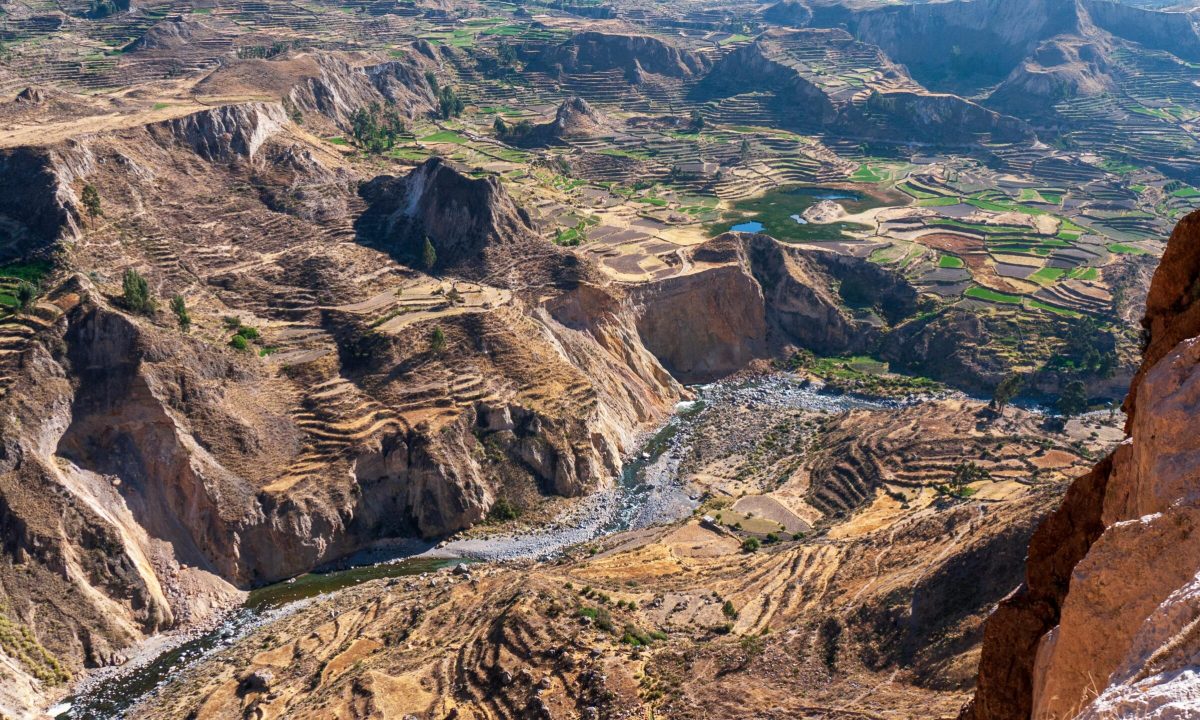
Colca Canyon, one of the deepest canyons in the world, is a stunning natural wonder located in southern Peru. This breathtaking canyon offers a perfect blend of dramatic landscapes, rich cultural heritage, and outdoor adventure, making it one of the most beautiful places to visit in Peru. With its towering cliffs, terraced fields, and vibrant wildlife, Colca Canyon is a must-visit destination for those exploring Peru.
- Dramatic Landscapes: Colca Canyon is known for its towering cliffs, deep valleys, and stunning vistas.
- Rich Cultural Heritage: The region is home to traditional Andean communities and ancient Incan terraces.
- Vibrant Wildlife: The canyon is a haven for wildlife, including the majestic Andean condor.
- Scenic Hiking Trails: Colca Canyon offers numerous hiking opportunities, with trails to viewpoints, hot springs, and traditional villages.
- Thermal Hot Springs: The region features natural hot springs, perfect for relaxation after a day of hiking.
- Traditional Villages: The canyon is dotted with charming villages, each with its unique culture and traditions.
- Condor Watching at Cruz del Condor: Visit this famous viewpoint to see the majestic Andean condor in flight.
- Hiking: Explore the scenic trails to viewpoints, hot springs, and traditional villages.
- Visit the Villages: Discover the charm and culture of traditional villages like Chivay, Yanque, and Cabanaconde.
- Relax in the Hot Springs: Soak in the natural thermal hot springs of La Calera.
- Photography: Capture the dramatic landscapes, vibrant wildlife, and traditional villages of Colca Canyon.
- Visit the Colca Valley: Explore the ancient Incan terraces and rich cultural heritage of the valley.
- Attend a Festival: Experience the vibrant culture of the region at events like the Wititi Festival.
- How to Reach: Drive or take a bus from Arequipa. Colca Canyon is about a 3-4 hour drive from Arequipa.
- Local Transportation: Renting a car or hiring a driver is the best way to explore the canyon. Taxis and buses are also available.
- Accommodation: Options range from luxury lodges like the Colca Lodge to budget hostels and guesthouses in Chivay and other villages.
- Local Cuisine: Try local dishes like alpaca, trout, and quinoa soup. Visit local restaurants for a taste of Peruvian cuisine.
- Budget: Mid-range; around $100-150 per day.
- Best Time to Visit: May to October for the best weather and clear skies.
- Booking Process: Book accommodations and guided tours in advance, especially during peak season.
- Additional Travel Tips: Bring comfortable hiking shoes, a raincoat, and plenty of water. The weather can be unpredictable, so be prepared for changing conditions.
6. Lima
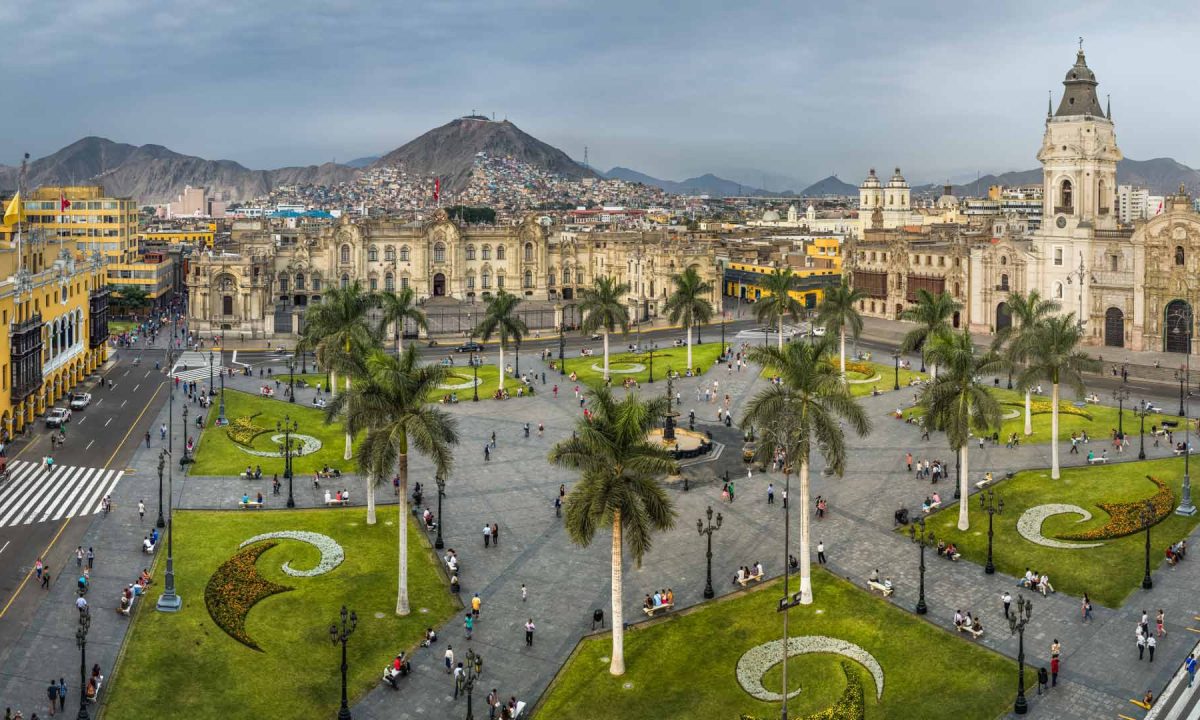
Lima, the vibrant capital of Peru, is a bustling metropolis known for its rich cultural heritage, stunning architecture, and world-class cuisine. This dynamic city offers a perfect blend of history and modernity, making it one of the most beautiful places to visit in Peru. With its well-preserved colonial buildings, lively neighborhoods, and renowned culinary scene, Lima is a must-visit destination for those exploring Peru.
- Rich Cultural Heritage: Lima is home to numerous museums, galleries, and historic sites.
- Stunning Architecture: The city features well-preserved colonial buildings, churches, and plazas.
- World-Class Cuisine: Lima is known for its diverse and innovative culinary scene, with numerous top-rated restaurants.
- Lively Neighborhoods: The city boasts vibrant neighborhoods like Miraflores, Barranco, and San Isidro.
- Scenic Coastal Views: Lima offers stunning views of the Pacific Ocean and beautiful coastal parks.
- Dynamic Nightlife: The city has a lively nightlife scene, with numerous bars, clubs, and live music venues.
- Explore the Historic Center: Wander through the historic center and admire the well-preserved colonial architecture.
- Visit the Plaza Mayor: Discover the heart of Lima and its iconic landmarks, including the Government Palace and the Cathedral of Lima.
- Explore the Larco Museum: Learn about Peru’s ancient civilizations and admire the extensive collection of pre-Columbian art.
- Stroll Along the Malecón: Enjoy the scenic coastal views and beautiful parks along the Malecón in Miraflores.
- Dine at Top-Rated Restaurants: Experience Lima’s world-class cuisine at renowned restaurants like Central, Maido, and Astrid y Gastón.
- Visit the Barranco District: Explore the bohemian neighborhood of Barranco, known for its vibrant arts scene and colorful street art.
- Attend a Cultural Event: Experience Lima’s dynamic culture at events like the Mistura Food Festival and the Lima Film Festival.
- How to Reach: Fly into Jorge Chávez International Airport in Lima. The airport is about a 30-minute drive from the city center.
- Local Transportation: The city has an efficient public transportation system, including buses and taxis. Biking and walking are also popular ways to get around.
- Accommodation: Options range from luxury hotels like the Belmond Miraflores Park to budget hostels and guesthouses.
- Local Cuisine: Try local dishes like ceviche, lomo saltado, and anticuchos. Visit local markets and restaurants for a taste of Peruvian cuisine.
- Budget: Mid-range; around $100-150 per day.
- Best Time to Visit: December to April for the best weather and clear skies.
- Booking Process: Book accommodations and popular attractions in advance. Use platforms like Booking.com or Hotels.com.
- Additional Travel Tips: Wear comfortable walking shoes for exploring the city. Bring a light jacket as the coastal weather can be cool and breezy.
7. Paracas National Reserve
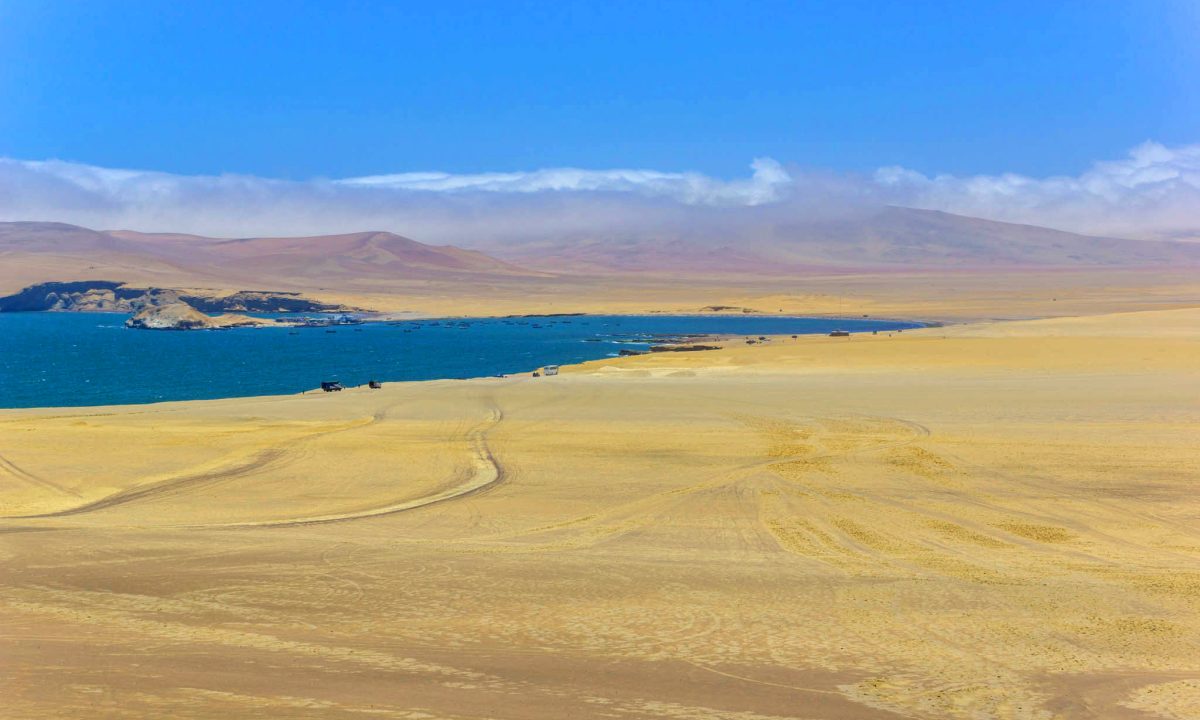
Paracas National Reserve, located on the southern coast of Peru, is a stunning protected area known for its diverse marine life, dramatic landscapes, and rich cultural heritage. This beautiful reserve offers a perfect blend of natural beauty and outdoor adventure, making it one of the most beautiful places to visit in Peru. With its pristine beaches, vibrant birdlife, and ancient archaeological sites, Paracas National Reserve is a must-visit destination for those exploring Peru’s coastal wonders.
- Diverse Marine Life: The reserve is home to a wide range of marine species, including sea lions, dolphins, and Humboldt penguins.
- Dramatic Landscapes: Paracas features stunning coastal cliffs, sandy beaches, and desert landscapes.
- Rich Birdlife: The reserve is a haven for birdwatchers, with numerous bird species, including flamingos and pelicans.
- Ancient Archaeological Sites: The area is home to ancient geoglyphs, including the Paracas Candelabra.
- Pristine Beaches: The reserve features beautiful beaches like Playa Roja and Playa La Mina.
- Scenic Boat Tours: The waters around Paracas offer opportunities for boat tours to explore the nearby Ballestas Islands.
- Rich Cultural Heritage: The region has a deep connection to pre-Incan civilizations, particularly the Paracas culture.
- Explore the Ballestas Islands: Take a boat tour to these islands to see sea lions, dolphins, and a variety of bird species.
- Visit the Paracas Candelabra: Admire this ancient geoglyph etched into the hillside.
- Relax on the Beaches: Enjoy the pristine sands and clear waters of Playa Roja, Playa La Mina, and Playa Yumaque.
- Bird Watching: Spot flamingos, pelicans, and other bird species in their natural habitat.
- Visit the Paracas National Reserve Visitor Center: Learn about the region’s natural history and cultural heritage.
- Photography: Capture the stunning coastal landscapes, diverse wildlife, and ancient geoglyphs.
- Water Sports: Engage in activities like windsurfing, kitesurfing, and kayaking.
- How to Reach: Drive or take a bus from Lima. Paracas is about a 3.5-hour drive from the capital.
- Local Transportation: Renting a car or hiring a driver is the best way to explore the reserve. Taxis and tours are also available.
- Accommodation: Options range from luxury resorts like the Hotel Paracas to budget hostels and guesthouses.
- Local Cuisine: Try local dishes like ceviche, seafood platters, and Peruvian pisco. Visit local restaurants for a taste of coastal Peruvian cuisine.
- Budget: Mid-range; around $100-150 per day.
- Best Time to Visit: December to April for the best weather and clear skies.
- Booking Process: Book accommodations and boat tours in advance, especially during peak season.
- Additional Travel Tips: Bring sunscreen, a hat, and plenty of water. The coastal desert climate can be hot and dry.
8. Arequipa

Arequipa, known as the “White City” due to its stunning white volcanic stone architecture, is a beautiful city nestled in the Andes Mountains. This charming city offers a perfect blend of colonial history, vibrant culture, and breathtaking landscapes, making it one of the most beautiful places to visit in Peru. With its well-preserved historic center, lively markets, and stunning views of the surrounding volcanoes, Arequipa is a must-visit destination for those exploring Peru.
- White Volcanic Stone Architecture: Arequipa is renowned for its buildings made from sillar, a white volcanic stone.
- Historic Center: The city features a well-preserved colonial center, recognized as a UNESCO World Heritage Site.
- Vibrant Markets: Arequipa is known for its bustling markets, offering a wide range of handicrafts, textiles, and local produce.
- Stunning Volcano Views: The city is surrounded by three impressive volcanoes: Misti, Chachani, and Pichu Pichu.
- Rich Cultural Heritage: Arequipa has a deep connection to colonial and indigenous history and traditions.
- Scenic Landscapes: The city offers breathtaking views of the Andes Mountains and surrounding valleys.
- Explore the Historic Center: Wander through the historic center and admire the well-preserved colonial architecture.
- Visit the Plaza de Armas: Discover the heart of Arequipa and its iconic landmarks, including the Arequipa Cathedral and the Church of La Compañía de Jesús.
- Explore the Santa Catalina Monastery: Visit this stunning monastery, known for its colorful buildings and tranquil courtyards.
- Shop at San Camilo Market: Browse the vibrant market for handicrafts, textiles, and local produce.
- Hike to Misti Volcano: Embark on a challenging hike to the summit of Misti for panoramic views of Arequipa and the surrounding landscapes.
- Visit the Museo Santuarios Andinos: Learn about the Inca Ice Maiden, Juanita, and other archaeological finds.
- Dine at Local Restaurants: Experience Arequipa’s renowned cuisine, including dishes like rocoto relleno, adobo, and chupe de camarones.
- How to Reach: Fly into Rodríguez Ballón International Airport in Arequipa or take a bus from other major cities in Peru.
- Local Transportation: The city is walkable, and taxis and buses are readily available.
- Accommodation: Options range from luxury hotels like the Belmond Hotel Monasterio to budget hostels and guesthouses.
- Local Cuisine: Try local dishes like rocoto relleno, adobo, and chupe de camarones. Visit local restaurants for a taste of Arequipa’s cuisine.
- Budget: Mid-range; around $100-150 per day.
- Best Time to Visit: April to October for the best weather and clear skies.
- Booking Process: Book accommodations and popular attractions in advance, especially during peak season.
- Additional Travel Tips: Acclimate to the altitude before engaging in strenuous activities. Bring comfortable walking shoes and a good camera.
9. Manu National Park
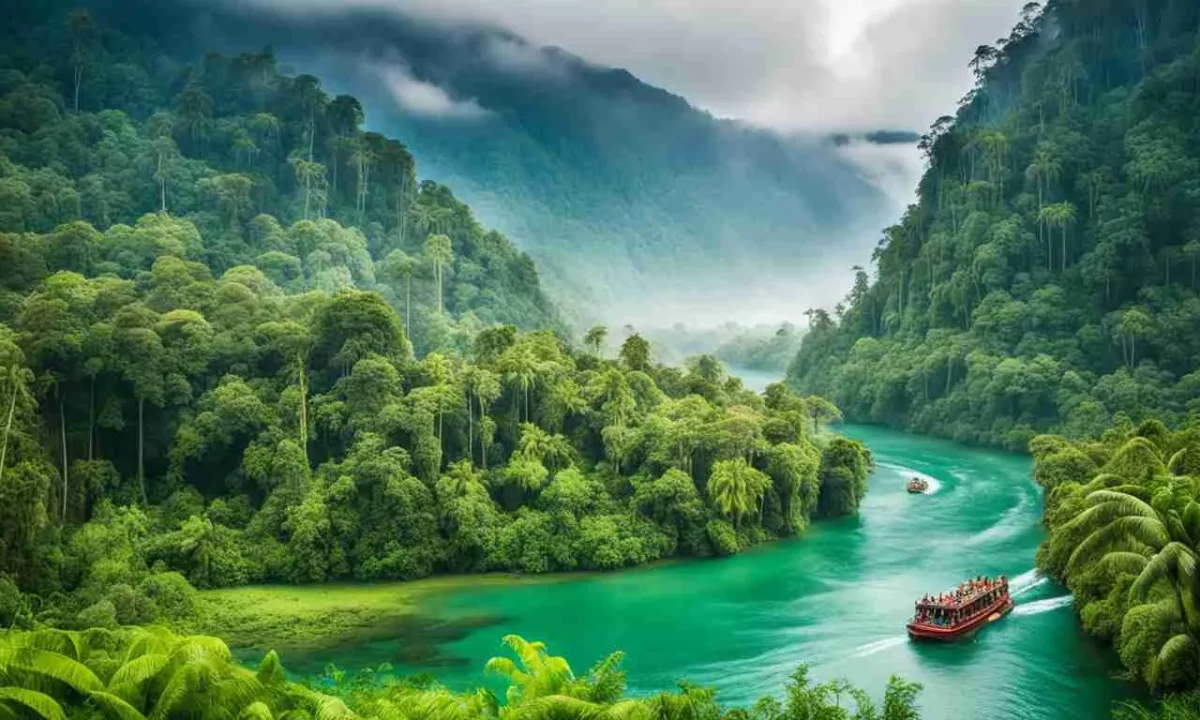
Manu National Park, a UNESCO World Heritage Site located in southeastern Peru, is one of the most biodiverse places on Earth. This pristine rainforest offers a perfect blend of natural beauty and wildlife adventure, making it one of the most beautiful places to visit in Peru. With its lush vegetation, diverse wildlife, and remote wilderness, Manu National Park is a must-visit destination for those exploring Peru’s Amazon rainforest.
- Incredible Biodiversity: Manu National Park is home to over 1,000 bird species, 200 mammal species, and countless plant species.
- Pristine Rainforest: The park features untouched primary rainforest, cloud forests, and lowland jungle.
- Rich Wildlife: The area is a haven for wildlife enthusiasts, with opportunities to see jaguars, giant otters, macaws, and more.
- Scenic Landscapes: Manu National Park offers stunning views of rivers, waterfalls, and lush vegetation.
- Remote Wilderness: The park provides a sense of isolation and untouched natural beauty.
- Cultural Heritage: The park is home to indigenous communities that have lived in harmony with the rainforest for centuries.
- Wildlife Watching: Spot jaguars, giant otters, macaws, and other wildlife in their natural habitat.
- Bird Watching: Discover over 1,000 bird species, including colorful macaws and toucans.
- Explore the Rainforest: Take guided hikes through the pristine rainforest and learn about its incredible biodiversity.
- Visit Clay Licks: Observe parrots and macaws gathering at clay licks, a unique wildlife spectacle.
- Boat Tours: Explore the rivers and oxbow lakes by boat and enjoy the stunning scenery.
- Photography: Capture the lush vegetation, diverse wildlife, and remote landscapes of Manu National Park.
- Cultural Experiences: Visit indigenous communities and learn about their traditional way of life.
- How to Reach: Take a flight from Cusco to Boca Manu, followed by a boat ride to the park. Alternatively, travel by road and river from Cusco.
- Local Transportation: Boats are the primary mode of transportation within the park. Guided tours are highly recommended.
- Accommodation: Options include lodges, eco-lodges, and camping within the park.
- Local Cuisine: Enjoy meals provided by lodges and eco-lodges, often featuring local ingredients and traditional dishes.
- Budget: High-range; around $200-300 per day.
- Best Time to Visit: May to September for the best weather and wildlife viewing.
- Booking Process: Book accommodations and guided tours well in advance, as access to the park is limited.
- Additional Travel Tips: Bring insect repellent, lightweight clothing, and sturdy hiking boots. Be prepared for changing weather conditions and remote wilderness.
10. Huaraz
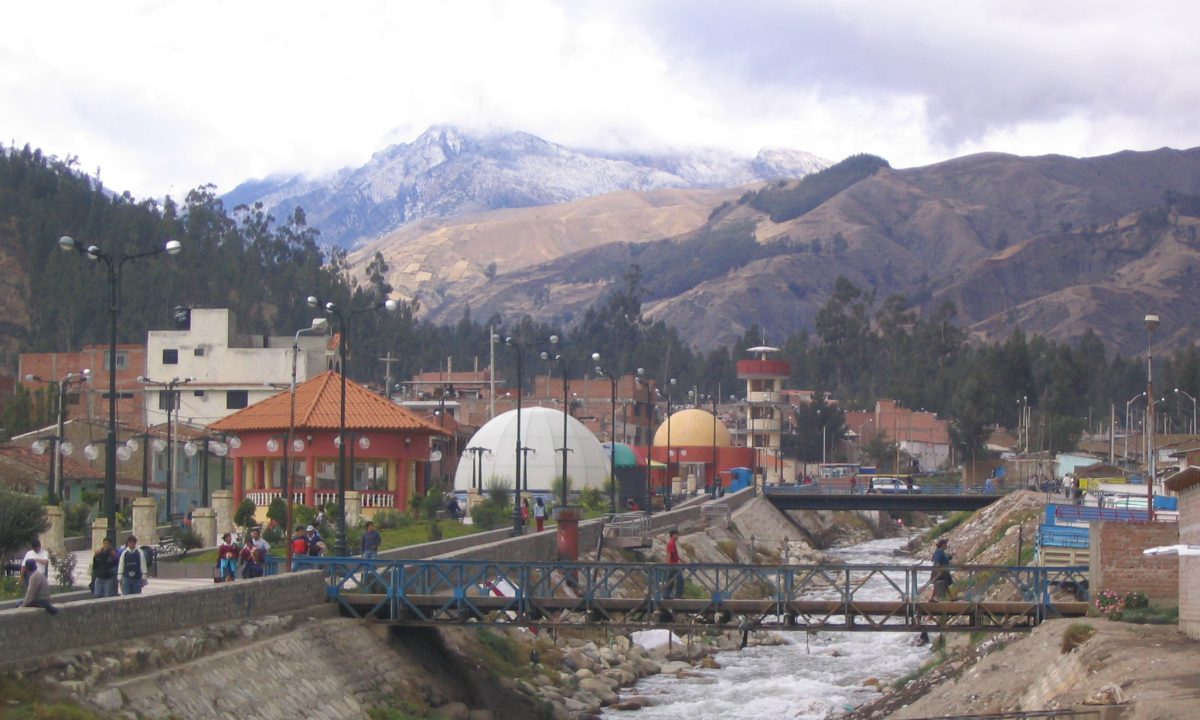
Huaraz, a picturesque city located in the heart of the Peruvian Andes, is known for its stunning mountain landscapes, vibrant culture, and outdoor adventure opportunities. This charming city offers a perfect blend of natural beauty and cultural experiences, making it one of the most beautiful places to visit in Peru. With its towering peaks, glacial lakes, and rich history, Huaraz is a must-visit destination for those exploring Peru’s mountainous regions.
- Stunning Mountain Landscapes: Huaraz is surrounded by the towering peaks of the Cordillera Blanca and Cordillera Negra mountain ranges.
- Glacial Lakes: The region features beautiful glacial lakes, including Laguna 69 and Laguna Parón.
- Vibrant Culture: Huaraz is known for its lively markets, traditional festivals, and rich cultural heritage.
- Outdoor Adventure: The area offers numerous opportunities for hiking, trekking, climbing, and mountain biking.
- Rich History: Huaraz has a deep connection to pre-Incan and Incan civilizations, with nearby archaeological sites.
- Scenic Hiking Trails: The region offers numerous hiking opportunities, with trails to glaciers, lakes, and mountain passes.
- Hike to Laguna 69: Embark on a challenging hike to this stunning glacial lake with turquoise waters.
- Explore Huascarán National Park: Discover the park’s diverse landscapes, including glaciers, lakes, and high-altitude grasslands.
- Climb Mount Huascarán: Attempt to summit Peru’s highest peak with a guided climbing expedition.
- Visit the Chavín de Huántar: Explore this ancient archaeological site, a UNESCO World Heritage Site.
- Shop at Local Markets: Browse the vibrant markets for handicrafts, textiles, and local produce.
- Photography: Capture the stunning mountain landscapes, glacial lakes, and vibrant culture of Huaraz.
- Attend a Festival: Experience the lively atmosphere of Huaraz’s traditional festivals and events.
- How to Reach: Drive or take a bus from Lima. Huaraz is about an 8-hour drive from the capital.
- Local Transportation: The city is walkable, and taxis and buses are readily available.
- Accommodation: Options range from luxury lodges to budget hostels and guesthouses.
- Local Cuisine: Try local dishes like pachamanca, trout, and cuy (guinea pig). Visit local restaurants for a taste of Andean cuisine.
- Budget: Mid-range; around $100-150 per day.
- Best Time to Visit: May to September for the best weather and hiking conditions.
- Booking Process: Book accommodations and guided tours in advance, especially during peak season.
- Additional Travel Tips: Acclimate to the altitude before engaging in strenuous activities. Bring warm clothing and sturdy hiking boots.
11. Nazca Lines
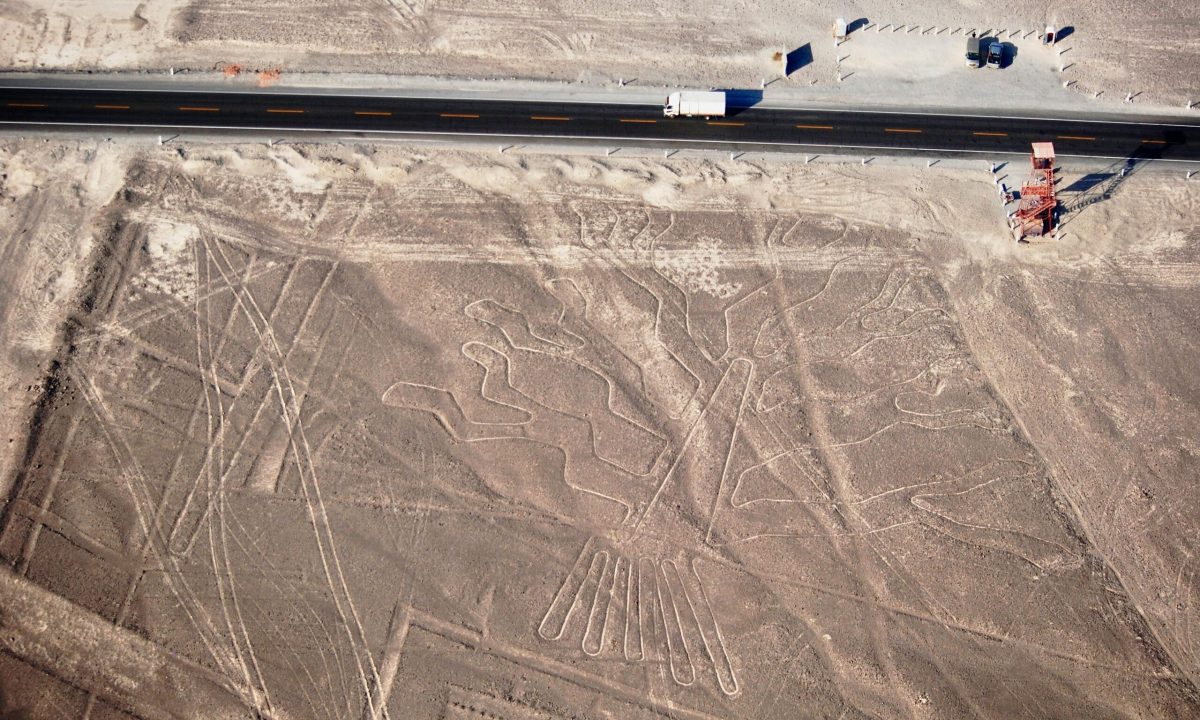
The Nazca Lines, a series of ancient geoglyphs etched into the desert floor, are one of the most mysterious and fascinating archaeological sites in the world. Located in southern Peru, these enigmatic lines offer a perfect blend of historical significance and stunning desert landscapes, making them one of the most beautiful places to visit in Peru. With their intricate designs, rich history, and unique viewing experiences, the Nazca Lines are a must-visit destination for those exploring Peru.
- Ancient Geoglyphs: The Nazca Lines consist of hundreds of geometric shapes, animal figures, and straight lines.
- Stunning Desert Landscapes: The geoglyphs are etched into the arid desert floor, creating a stark and beautiful contrast.
- Rich History: The lines were created by the Nazca culture between 500 BCE and 500 CE.
- Unique Viewing Experiences: The best way to see the lines is from the air, offering a bird’s-eye view of the intricate designs.
- Mysterious Significance: The purpose of the Nazca Lines remains a mystery, with theories ranging from astronomical markers to religious rituals.
- UNESCO World Heritage Site: The Nazca Lines are recognized for their cultural and historical significance.
- Take a Flight Over the Nazca Lines: Experience a bird’s-eye view of the geoglyphs with a scenic flight.
- Visit the Nazca Lines Viewing Tower: Get a closer look at some of the lines from this observation tower.
- Explore the Maria Reiche Museum: Learn about the work of Maria Reiche, who dedicated her life to studying the Nazca Lines.
- Visit the Cantalloc Aqueducts: Discover these ancient aqueducts, a testament to the engineering skills of the Nazca culture.
- Photography: Capture the intricate designs and stunning desert landscapes of the Nazca Lines.
- Visit the Chauchilla Cemetery: Explore this ancient burial site with well-preserved mummies and artifacts.
- Learn About the Nazca Culture: Take a guided tour to learn about the history and significance of the Nazca Lines.
- How to Reach: Drive or take a bus from Lima. Nazca is about a 6-hour drive from the capital.
- Local Transportation: The town is walkable, and taxis and tours are readily available.
- Accommodation: Options range from hotels and guesthouses in Nazca to budget hostels.
- Local Cuisine: Try local dishes like lomo saltado, ceviche, and ají de gallina. Visit local restaurants for a taste of Peruvian cuisine.
- Budget: Mid-range; around $100-150 per day.
- Best Time to Visit: May to October for the best weather and clear skies.
- Booking Process: Book flights over the Nazca Lines and accommodations in advance, especially during peak season.
- Additional Travel Tips: Bring sunscreen, a hat, and plenty of water. The desert climate can be hot and dry.
12. Iquitos and the Amazon Rainforest
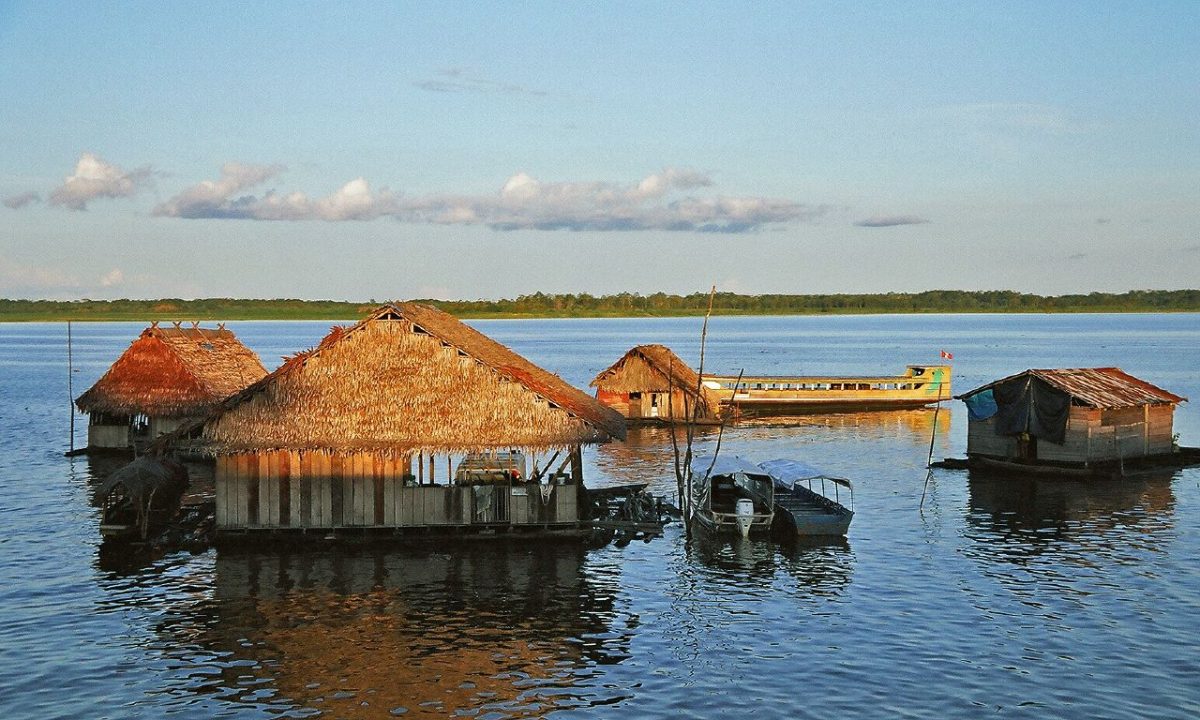
Iquitos, the gateway to the Peruvian Amazon, is a vibrant city located in the heart of the rainforest. This bustling city offers a perfect blend of natural beauty and cultural experiences, making it one of the most beautiful places to visit in Peru. With its lush vegetation, diverse wildlife, and unique river culture, Iquitos and the Amazon Rainforest are must-visit destinations for those exploring Peru’s tropical wonders.
- Lush Rainforest: The Amazon Rainforest is known for its dense vegetation, towering trees, and diverse plant life.
- Rich Wildlife: The region is home to a wide range of wildlife, including monkeys, sloths, toucans, and pink river dolphins.
- Vibrant River Culture: Iquitos is a bustling river city with a unique blend of indigenous and colonial influences.
- Scenic Boat Tours: The Amazon River and its tributaries offer opportunities for boat tours to explore the rainforest.
- Cultural Heritage: The region has a deep connection to indigenous cultures and traditions.
- Remote Wilderness: The Amazon Rainforest provides a sense of isolation and untouched natural beauty.
- Explore the Amazon Rainforest: Take guided hikes through the rainforest and learn about its incredible biodiversity.
- Wildlife Watching: Spot monkeys, sloths, toucans, and pink river dolphins in their natural habitat.
- Boat Tours on the Amazon River: Explore the river and its tributaries by boat and enjoy the stunning scenery.
- Visit the Belén Market: Discover the vibrant market in Iquitos, offering a wide range of local products and traditional crafts.
- Learn About Indigenous Cultures: Visit indigenous communities and learn about their traditional way of life.
- Visit the Manatee Rescue Center: Learn about conservation efforts to protect the endangered Amazonian manatee.
- Photography: Capture the lush vegetation, diverse wildlife, and vibrant river culture of Iquitos and the Amazon Rainforest.
- How to Reach: Fly into Coronel FAP Francisco Secada Vignetta International Airport in Iquitos. The city is not accessible by road.
- Local Transportation: Boats are the primary mode of transportation within the rainforest. Taxis and mototaxis are available in Iquitos.
- Accommodation: Options include jungle lodges, eco-lodges, and hotels in Iquitos.
- Local Cuisine: Try local dishes like juane, tacacho with cecina, and paiche. Visit local restaurants for a taste of Amazonian cuisine.
- Budget: Mid-range; around $150-200 per day.
- Best Time to Visit: May to October for the best weather and wildlife viewing.
- Booking Process: Book accommodations and guided tours well in advance, as access to the rainforest is limited.
- Additional Travel Tips: Bring insect repellent, lightweight clothing, and sturdy hiking boots. Be prepared for changing weather conditions and remote wilderness.
13. Rainbow Mountain (Vinicunca)

Rainbow Mountain, also known as Vinicunca, is a stunning natural wonder located in the Andes Mountains of Peru. This colorful mountain offers a perfect blend of breathtaking landscapes and outdoor adventure, making it one of the most beautiful places to visit in Peru. With its vibrant stripes of red, orange, yellow, and green, Rainbow Mountain is a must-visit destination for those seeking to experience Peru’s unique geological beauty.
- Vibrant Colors: Rainbow Mountain is known for its striking colors, created by mineral deposits in the rock layers.
- Stunning Mountain Views: The mountain offers panoramic views of the surrounding Andes Mountains.
- Scenic Hiking Trails: The area features challenging hiking trails that lead to the summit of Rainbow Mountain.
- Rich Flora and Fauna: The region is home to diverse plant and animal life, including llamas and alpacas.
- Remote Wilderness: Rainbow Mountain provides a sense of isolation and untouched natural beauty.
- High Altitude: The mountain is located at an elevation of over 5,000 meters (16,400 feet) above sea level.
- Hike to the Summit: Embark on a challenging hike to the summit of Rainbow Mountain for breathtaking views.
- Photography: Capture the vibrant colors and stunning landscapes of Rainbow Mountain.
- Wildlife Watching: Spot llamas, alpacas, and other wildlife in their natural habitat.
- Explore the Surrounding Area: Discover the scenic trails and beautiful landscapes around Rainbow Mountain.
- Learn About Local Culture: Take a guided tour to learn about the local Quechua culture and traditions.
- Visit the Red Valley: Explore the nearby Red Valley, known for its striking red rock formations.
- Acclimate to the Altitude: Spend time acclimating to the high altitude before attempting the hike.
- How to Reach: Drive or take a guided tour from Cusco. The trailhead is about a 3-hour drive from Cusco.
- Local Transportation: Renting a car or joining a guided tour is the best way to reach Rainbow Mountain.
- Accommodation: Options include hotels and guesthouses in Cusco or camping near the trailhead.
- Local Cuisine: Try local dishes like quinoa soup, trout, and alpaca. Visit local restaurants for a taste of Peruvian cuisine.
- Budget: Mid-range; around $100-150 per day.
- Best Time to Visit: May to September for the best weather and clear skies.
- Booking Process: Book guided tours and accommodations in advance, especially during peak season.
- Additional Travel Tips: Bring warm clothing, sturdy hiking boots, and plenty of water. The weather can be unpredictable, and the high altitude can be challenging.
14. Trujillo
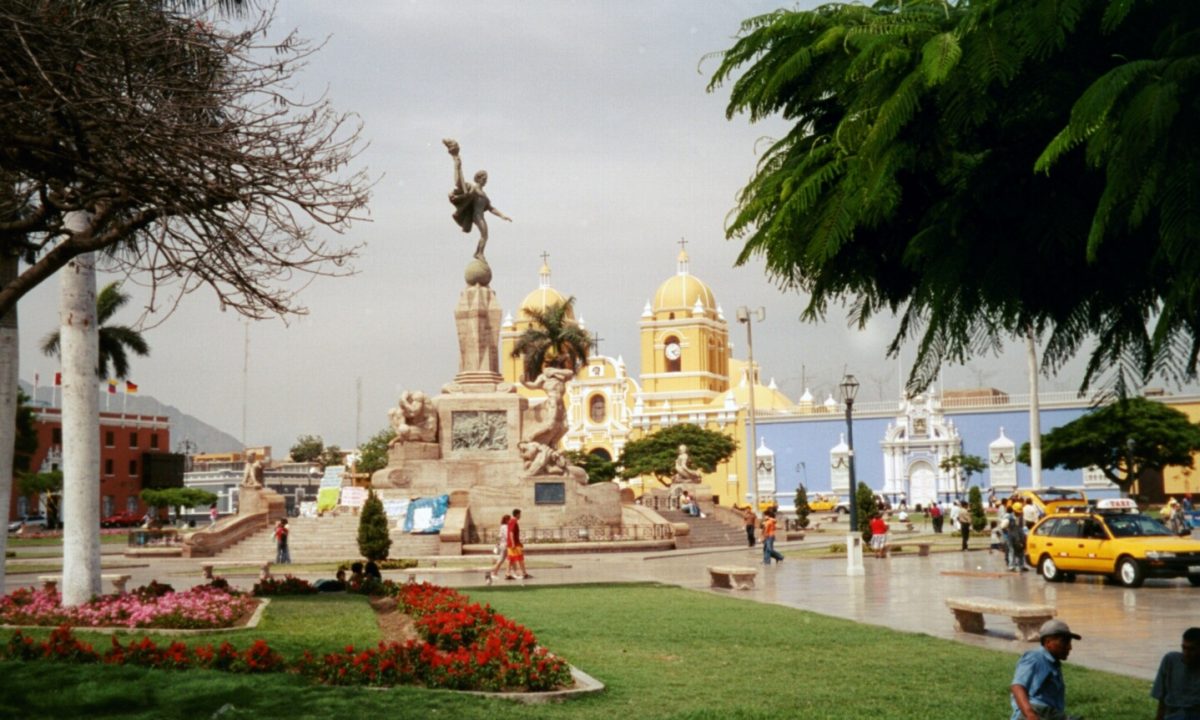
Trujillo, a historic city located on the northern coast of Peru, is known for its rich cultural heritage, stunning colonial architecture, and vibrant festivals. This charming city offers a perfect blend of history and modernity, making it one of the most beautiful places to visit in Peru. With its well-preserved historic center, ancient archaeological sites, and lively cultural scene, Trujillo is a must-visit destination for those exploring Peru.
- Rich Cultural Heritage: Trujillo is known for its colonial architecture, historic churches, and vibrant cultural scene.
- Stunning Archaeological Sites: The area is home to ancient Moche and Chimu archaeological sites, including Chan Chan and Huaca de la Luna.
- Vibrant Festivals: Trujillo hosts numerous festivals and events, including the Marinera Festival and the International Spring Festival.
- Beautiful Beaches: The nearby beach town of Huanchaco is known for its surfing and traditional reed boats.
- Scenic Landscapes: Trujillo offers beautiful views of the coastal plains and surrounding mountains.
- Lively Markets: The city features bustling markets, offering a wide range of handicrafts, textiles, and local produce.
- Explore Chan Chan: Visit the ancient capital of the Chimu civilization, a UNESCO World Heritage Site.
- Visit Huaca de la Luna: Discover the impressive Moche pyramids and their stunning murals.
- Stroll Through the Historic Center: Wander through the historic center and admire the well-preserved colonial architecture.
- Attend the Marinera Festival: Experience the vibrant culture of Trujillo at this traditional dance festival.
- Relax in Huanchaco: Enjoy the beautiful beaches, surf, and see the traditional reed boats.
- Visit the Trujillo Cathedral: Admire the stunning architecture and rich history of this colonial-era cathedral.
- Shop at Local Markets: Browse the vibrant markets for handicrafts, textiles, and local produce.
- How to Reach: Fly into Cap. FAP Carlos Martínez de Pinillos International Airport in Trujillo or take a bus from other major cities in Peru.
- Local Transportation: The city is walkable, and taxis and buses are readily available.
- Accommodation: Options range from luxury hotels to budget hostels and guesthouses.
- Local Cuisine: Try local dishes like ceviche, cabrito, and shambar. Visit local restaurants for a taste of Peruvian cuisine.
- Budget: Mid-range; around $100-150 per day.
- Best Time to Visit: April to November for the best weather and festival season.
- Booking Process: Book accommodations and popular attractions in advance, especially during peak season.
- Additional Travel Tips: Bring comfortable walking shoes and a good camera. The weather can be warm and sunny, so pack accordingly.
15. Chiclayo

Chiclayo, known as the “City of Friendship,” is a vibrant city located on the northern coast of Peru. This bustling city offers a perfect blend of cultural heritage, stunning archaeological sites, and lively markets, making it one of the most beautiful places to visit in Peru. With its rich history, beautiful landscapes, and warm hospitality, Chiclayo is a must-visit destination for those exploring Peru.
- Rich Cultural Heritage: Chiclayo is known for its vibrant culture, historic sites, and traditional festivals.
- Stunning Archaeological Sites: The area is home to ancient Moche and Lambayeque archaeological sites, including the Lord of Sipán and Túcume.
- Lively Markets: Chiclayo features bustling markets, offering a wide range of handicrafts, textiles, and local produce.
- Beautiful Landscapes: The city offers beautiful views of the coastal plains and surrounding mountains.
- Warm Hospitality: Chiclayo is known for its friendly and welcoming atmosphere.
- Scenic Beaches: The nearby beach town of Pimentel is known for its beautiful beaches and traditional fishing boats.
- Visit the Royal Tombs of Sipán Museum: Discover the treasures of the Lord of Sipán, one of the most significant archaeological finds in the Americas.
- Explore Túcume: Visit the ancient Lambayeque pyramids and learn about their historical significance.
- Stroll Through the Mercado Modelo: Browse the vibrant market for handicrafts, textiles, and local produce.
- Relax in Pimentel: Enjoy the beautiful beaches, surf, and see the traditional fishing boats.
- Visit the Bruning National Archaeological Museum: Learn about the rich history and culture of the Moche and Lambayeque civilizations.
- Attend a Festival: Experience the vibrant culture of Chiclayo at events like the Señor de Sipán Festival and the Festival of San Pedro and San Pablo.
- Photography: Capture the stunning archaeological sites, vibrant markets, and beautiful landscapes of Chiclayo.
- How to Reach: Fly into Capitán FAP José A. Quiñones Gonzáles International Airport in Chiclayo or take a bus from other major cities in Peru.
- Local Transportation: The city is walkable, and taxis and buses are readily available.
- Accommodation: Options range from luxury hotels to budget hostels and guesthouses.
- Local Cuisine: Try local dishes like arroz con pato, ceviche, and chinguirito. Visit local restaurants for a taste of Peruvian cuisine.
- Budget: Mid-range; around $100-150 per day.
- Best Time to Visit: April to November for the best weather and festival season.
- Booking Process: Book accommodations and popular attractions in advance, especially during peak season.
- Additional Travel Tips: Bring comfortable walking shoes and a good camera. The weather can be warm and sunny, so pack accordingly.
